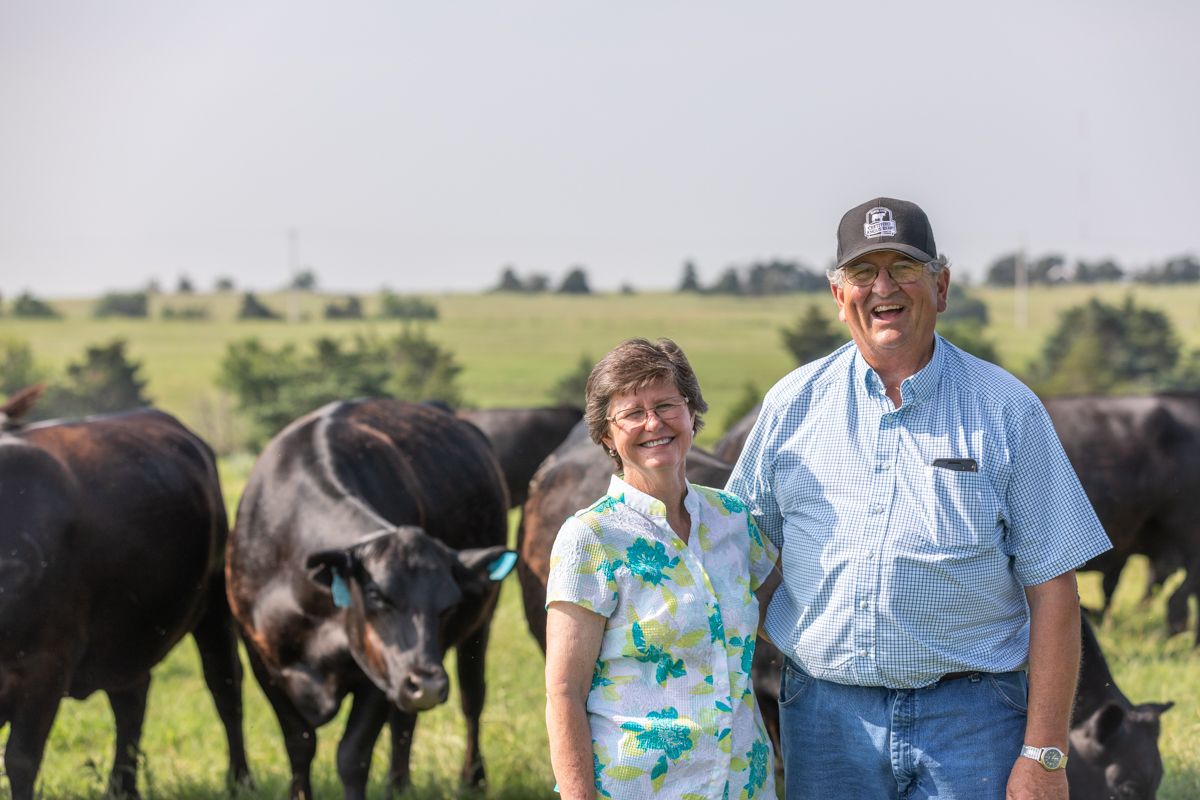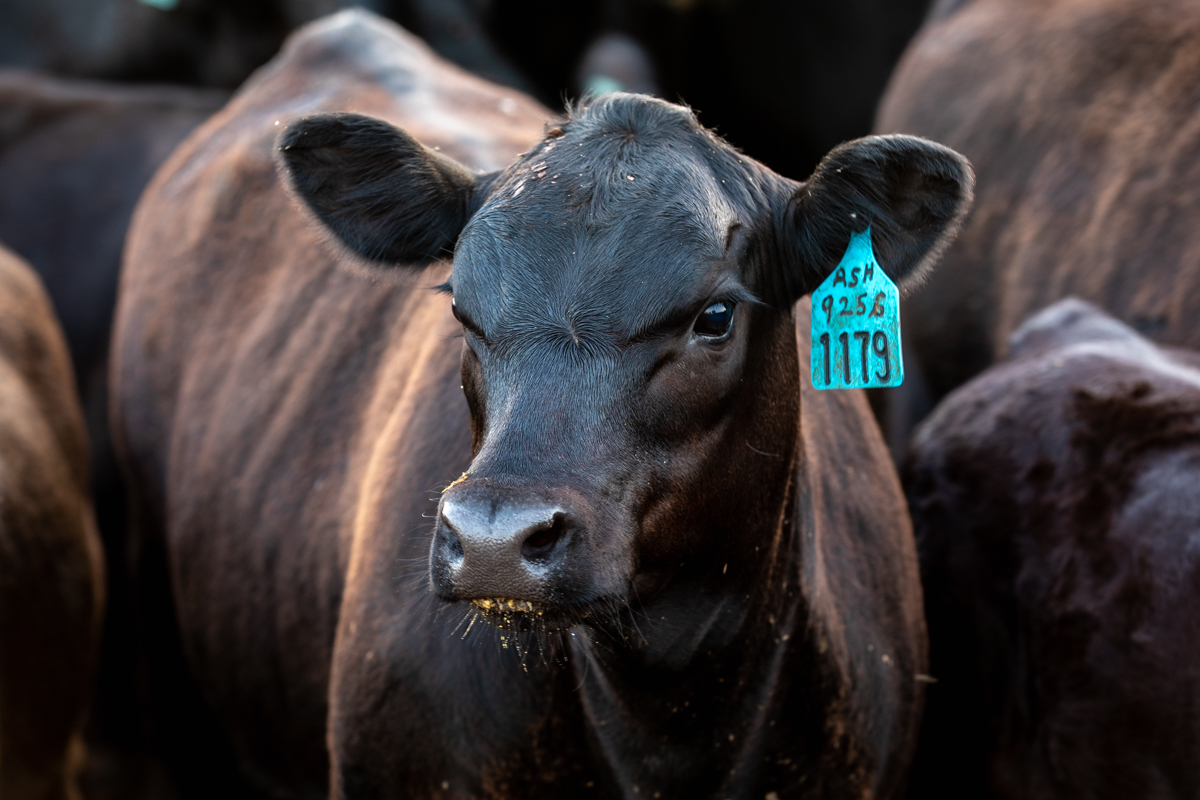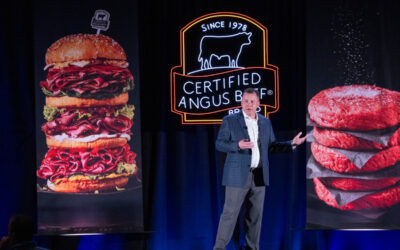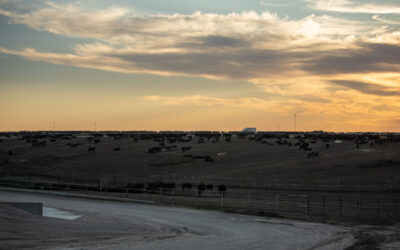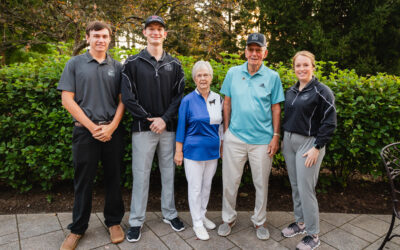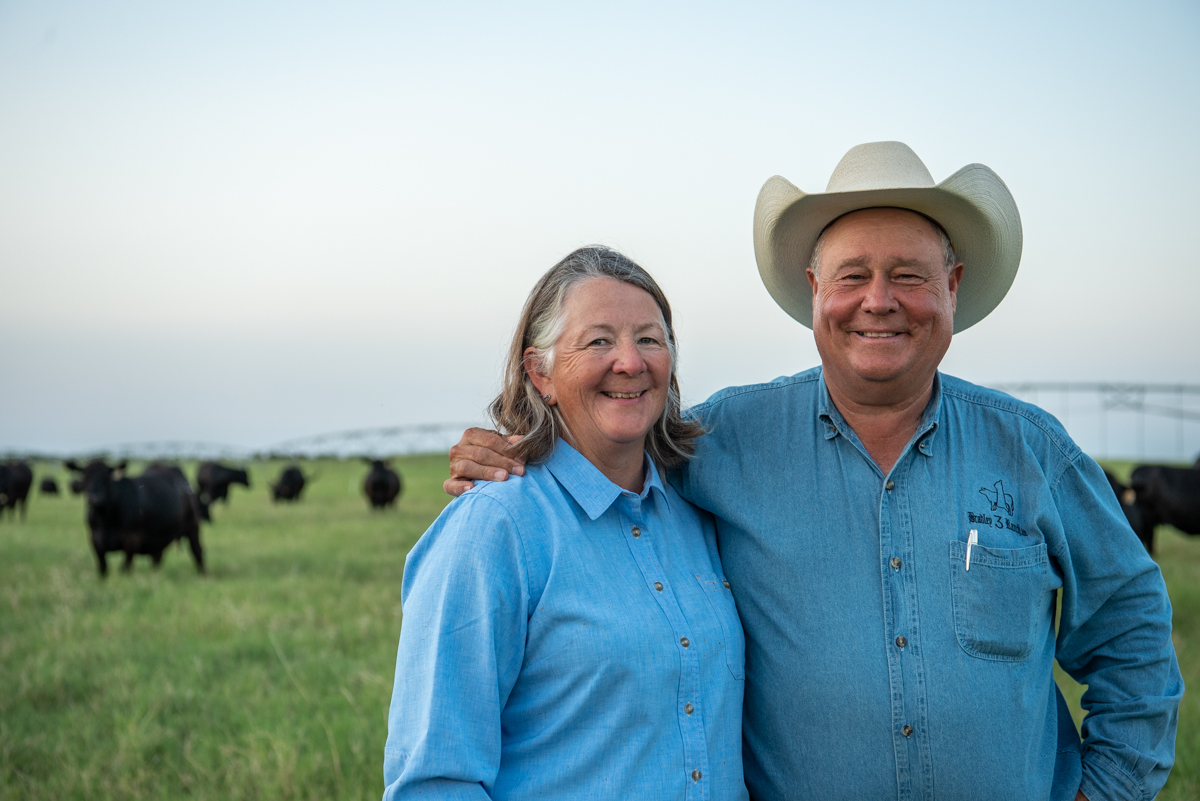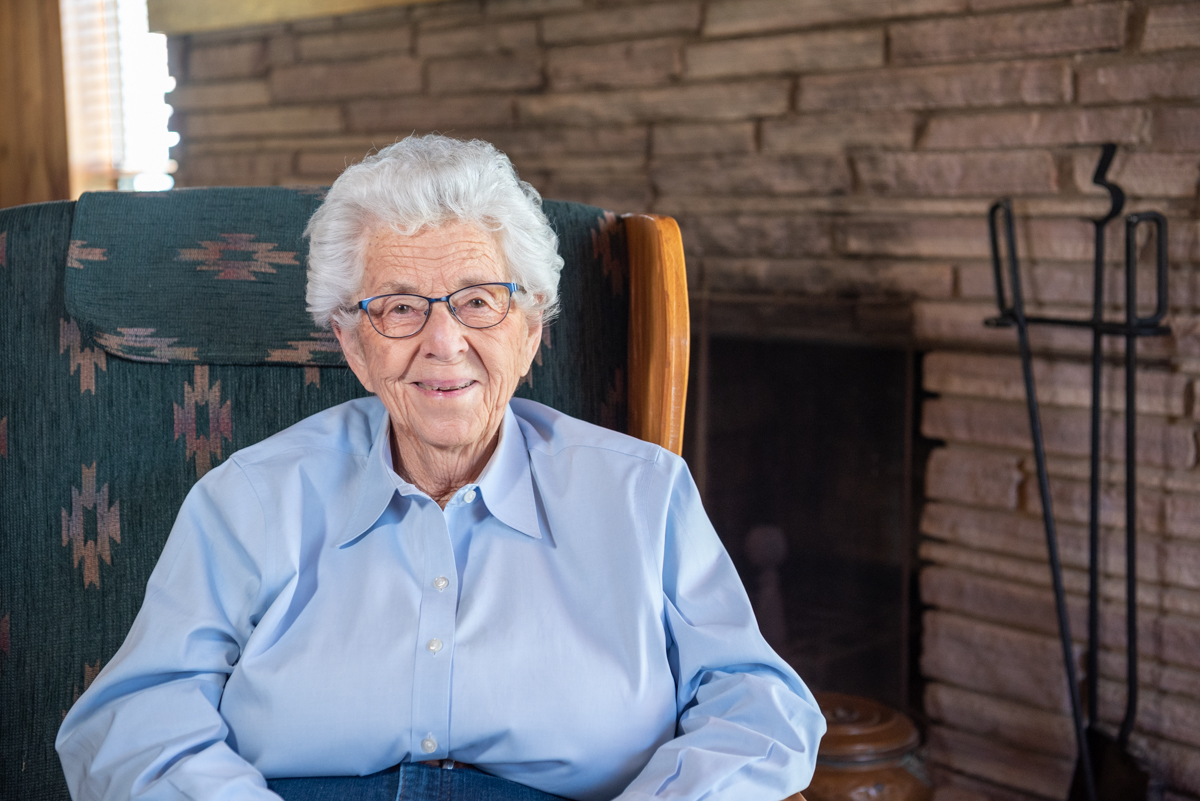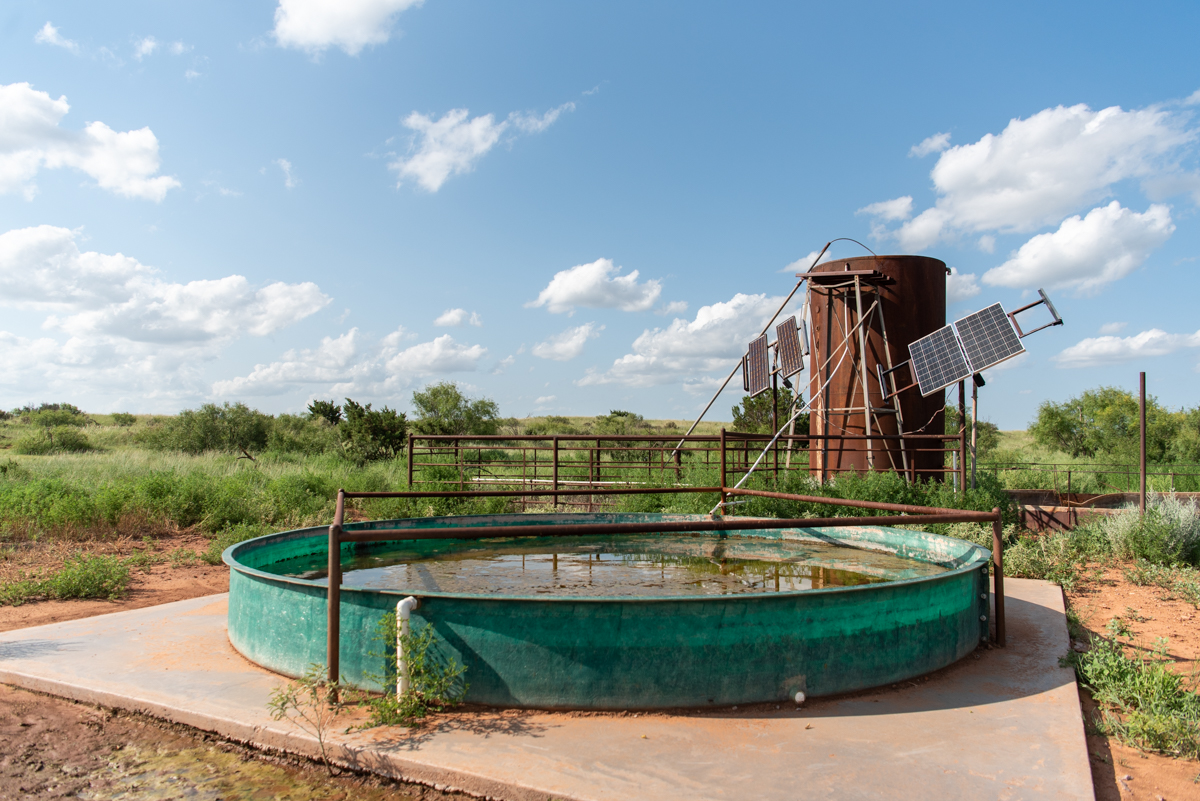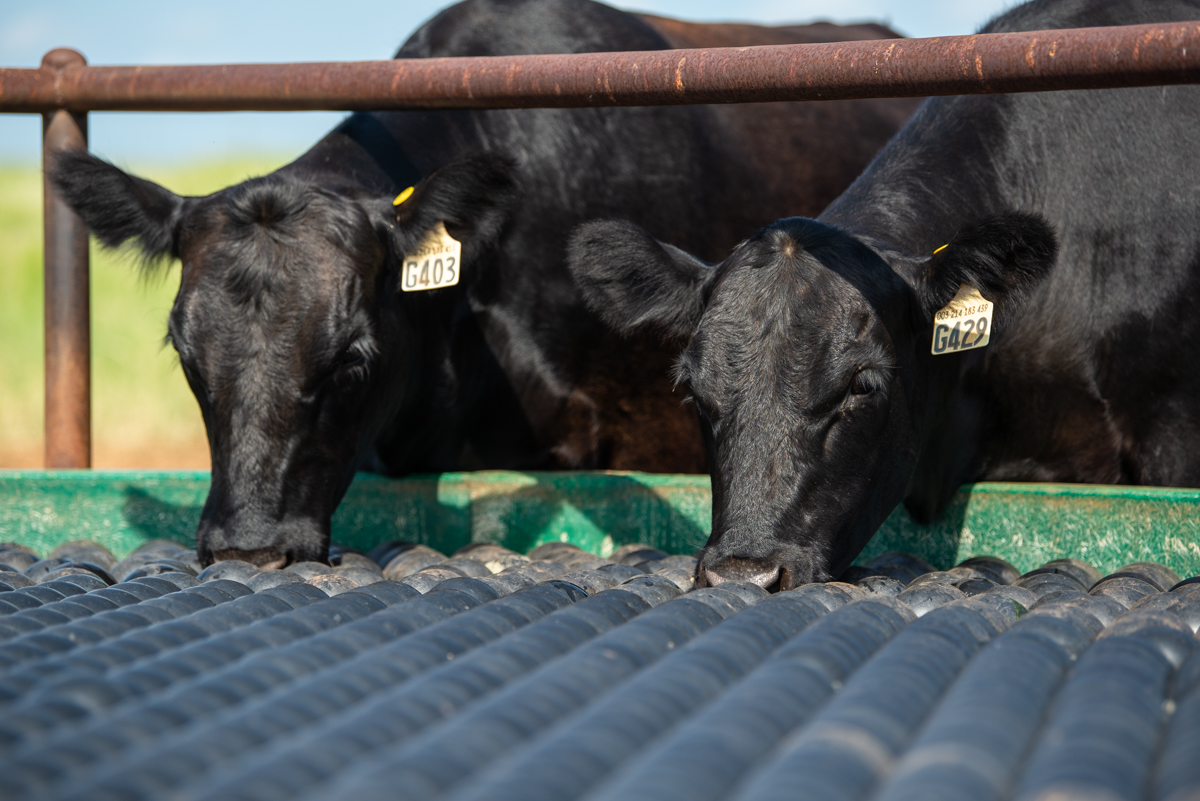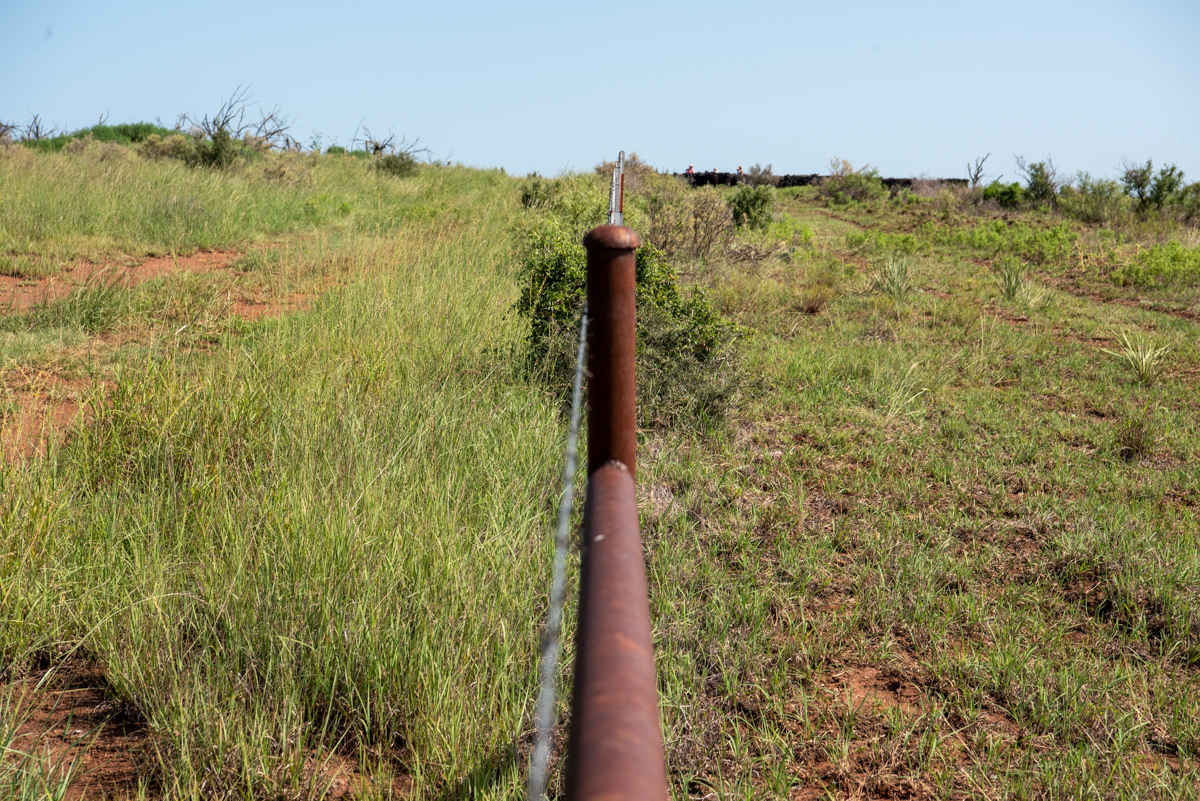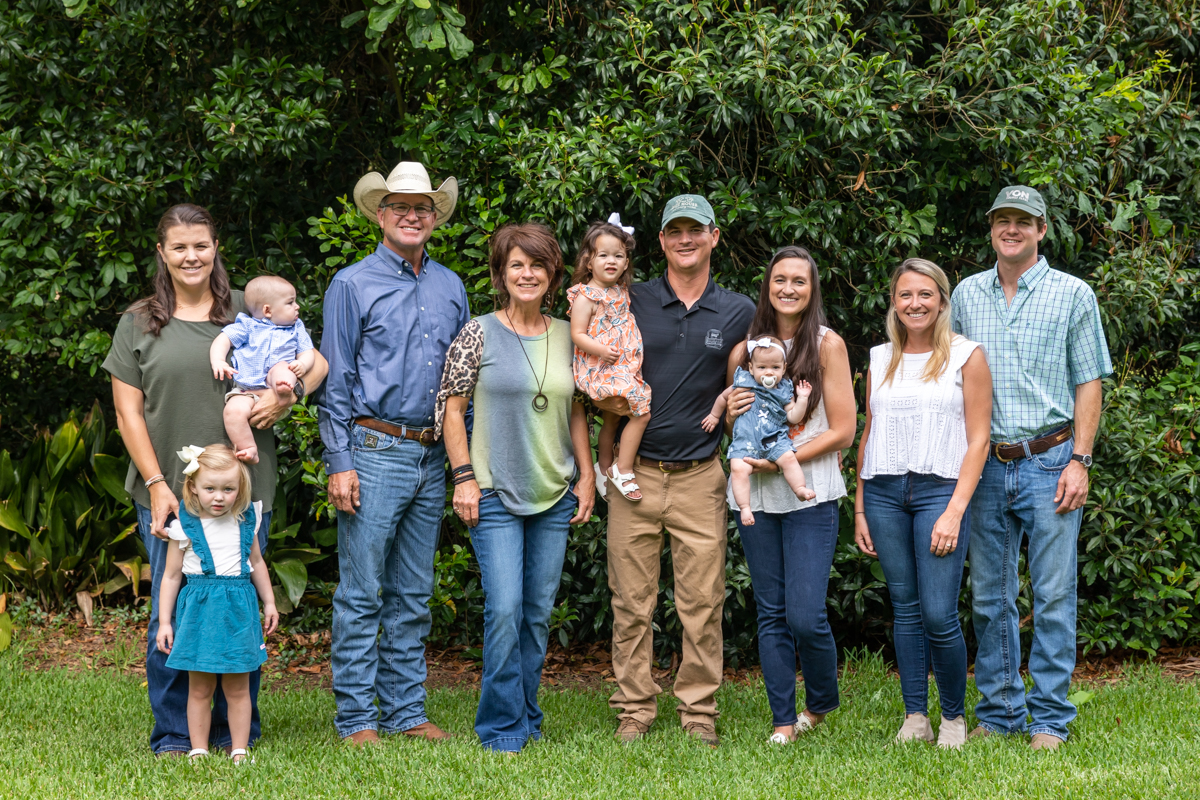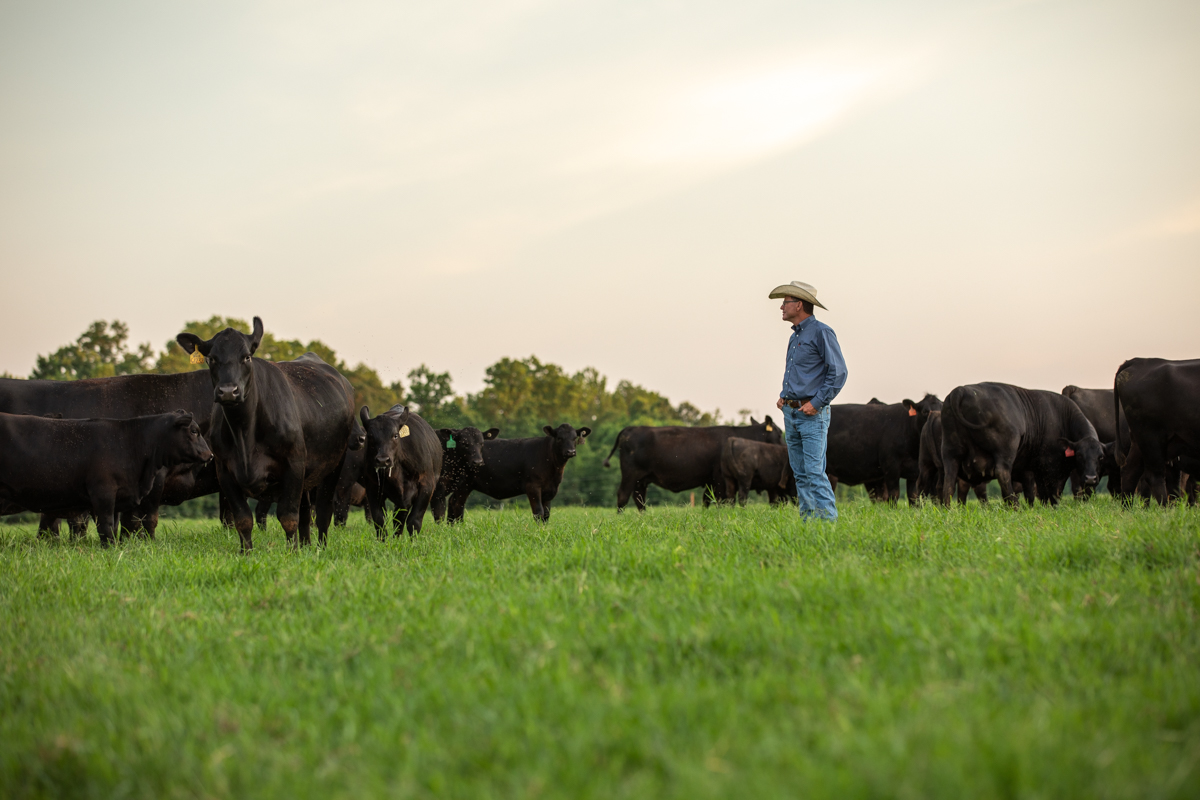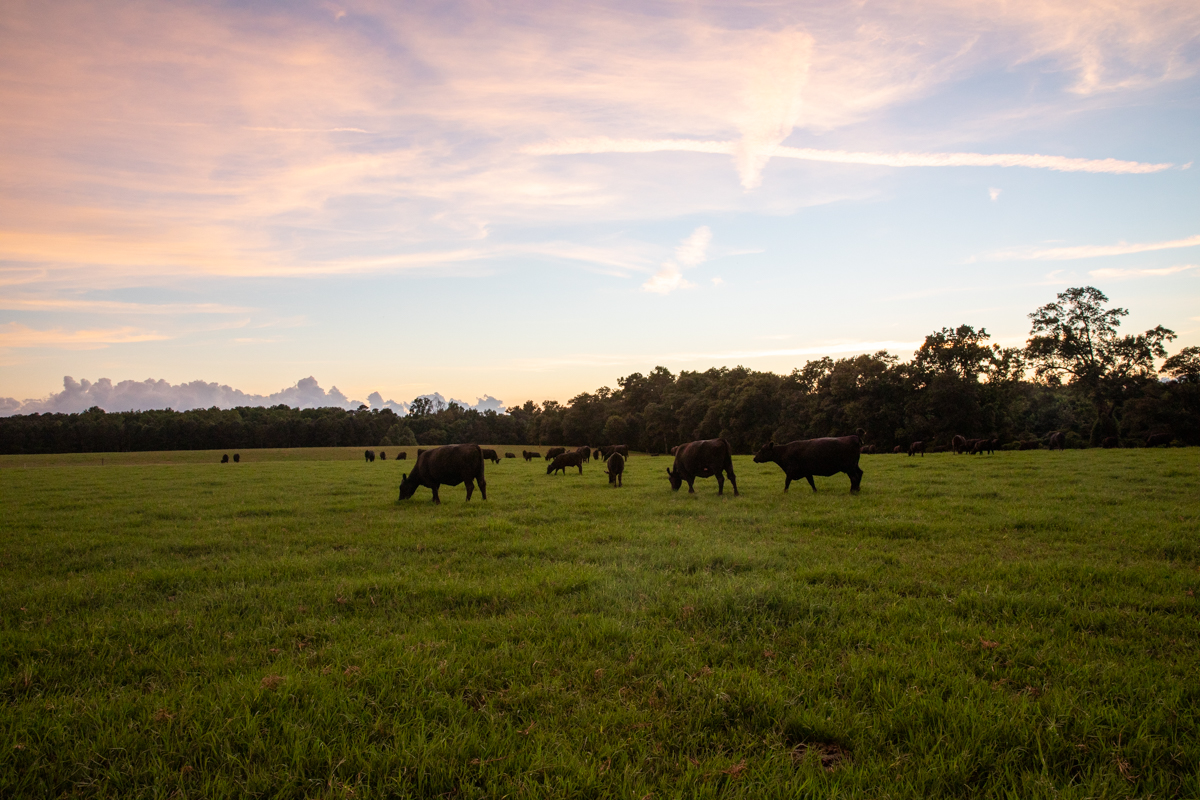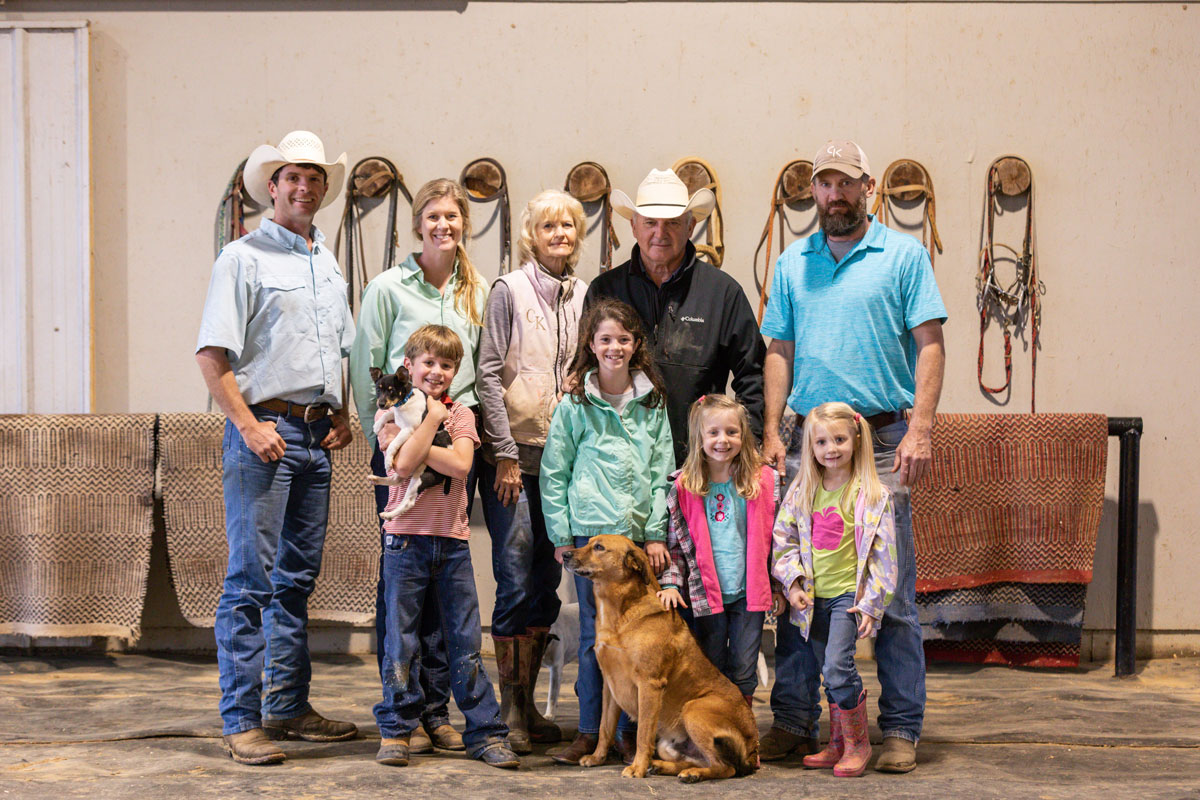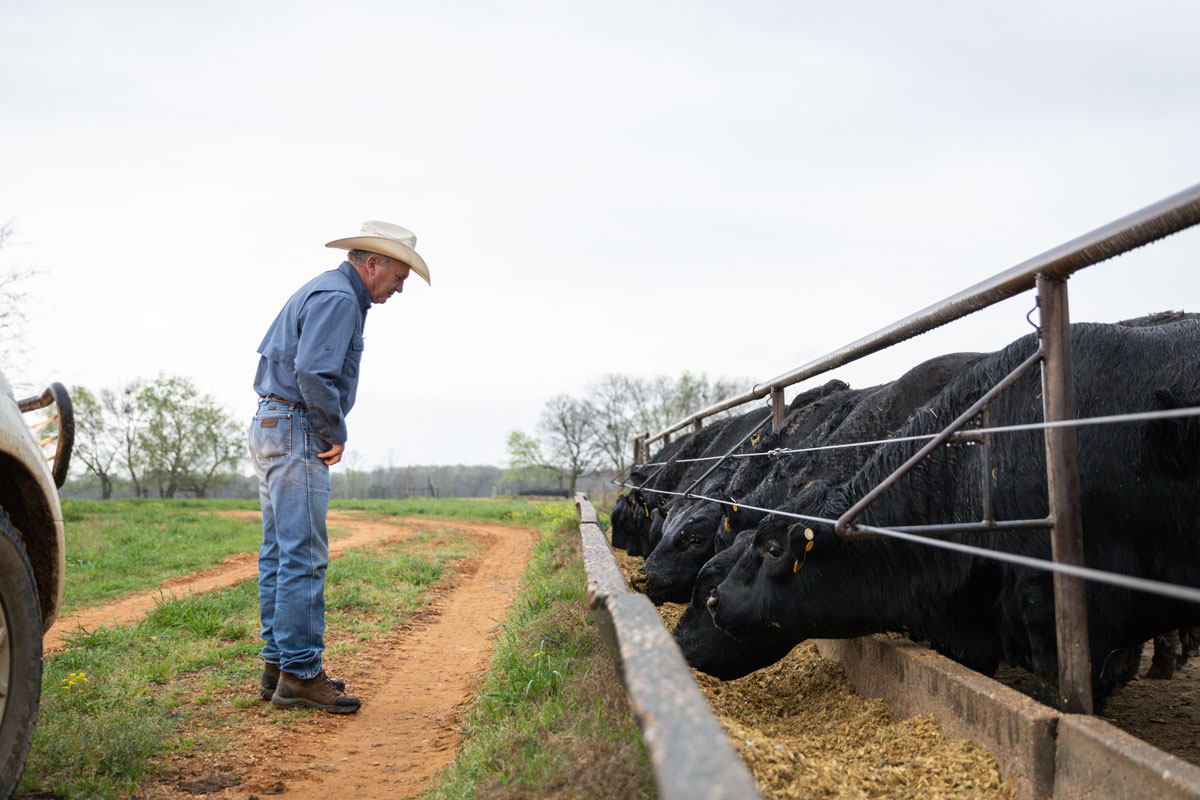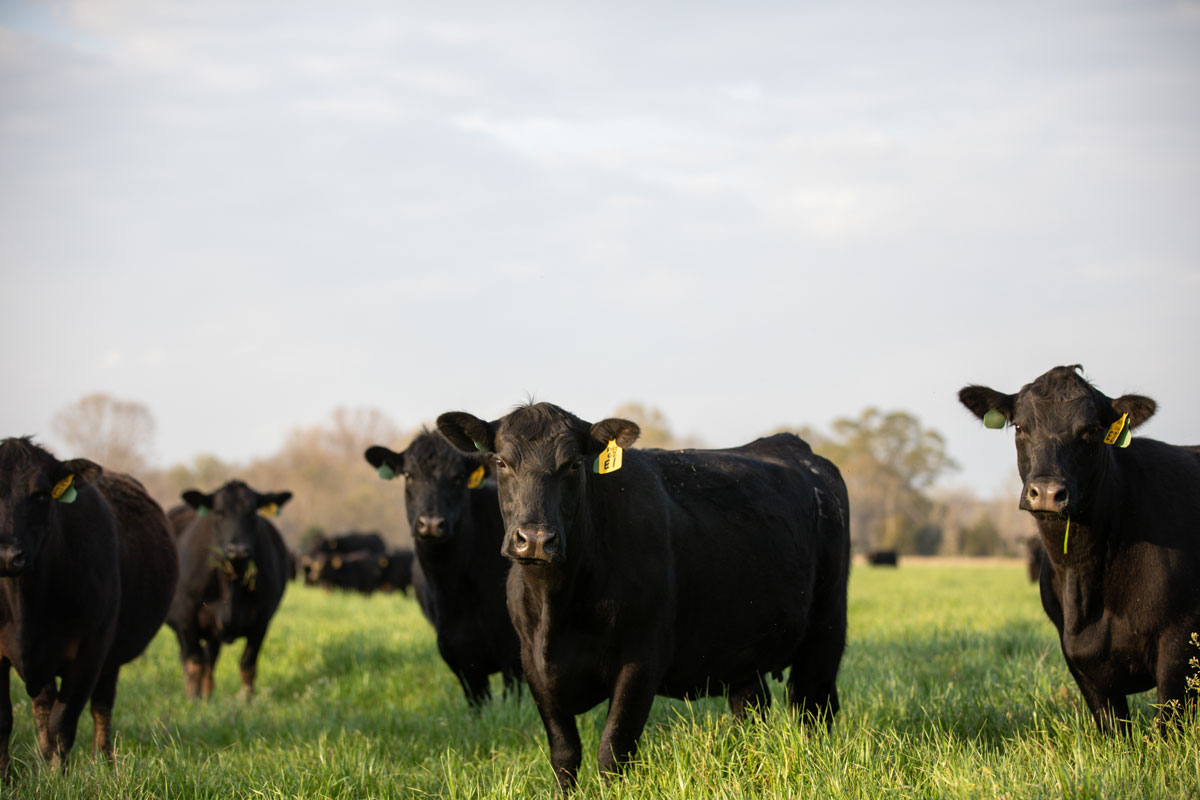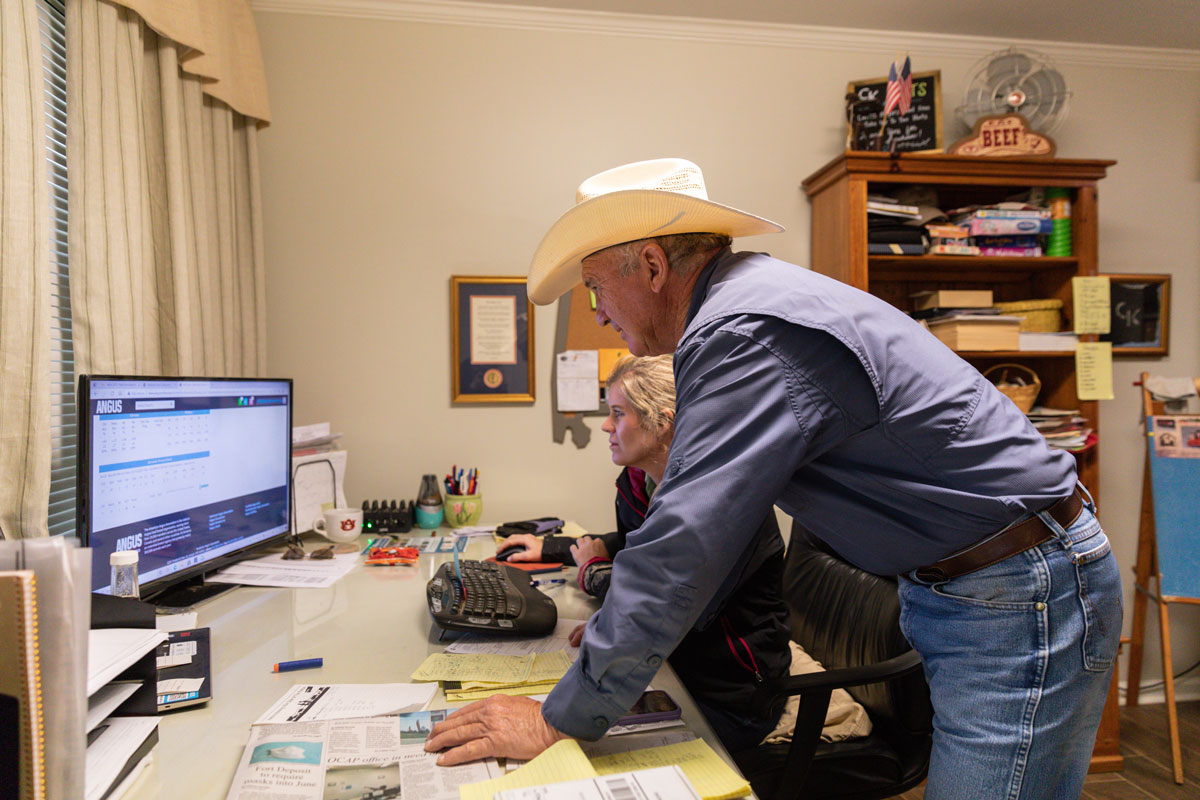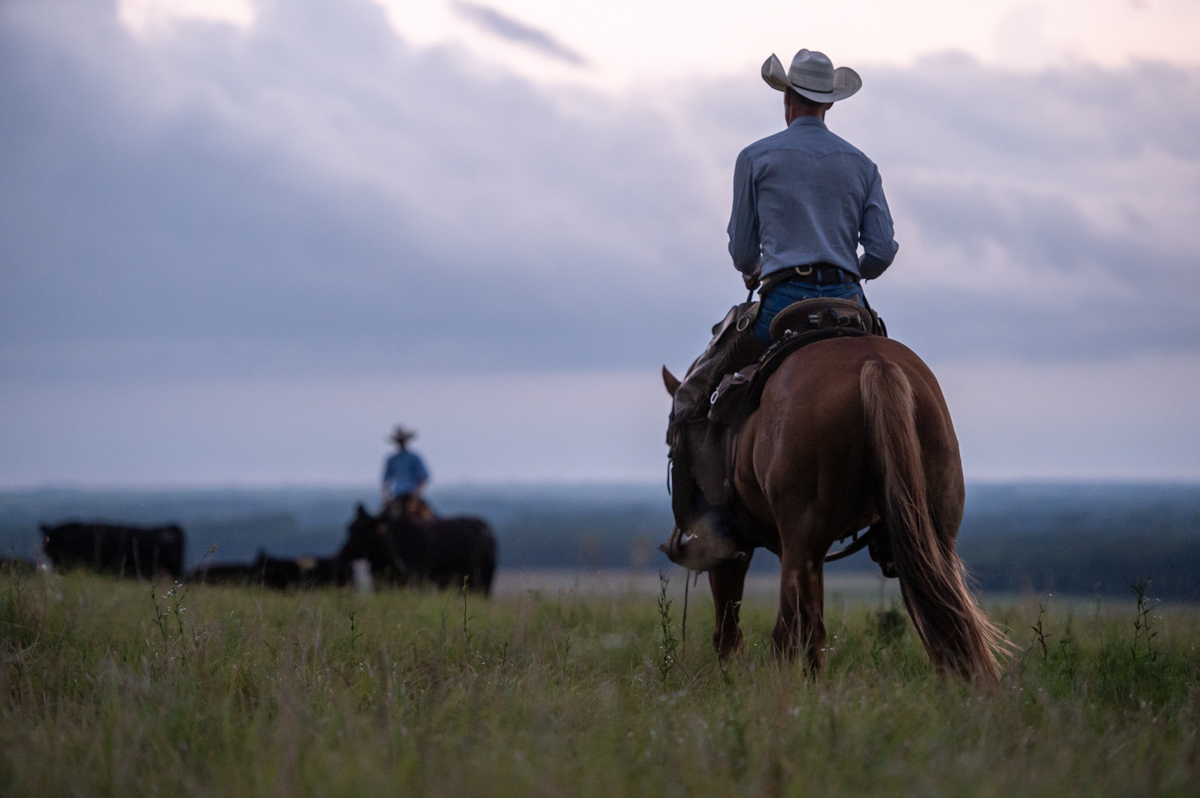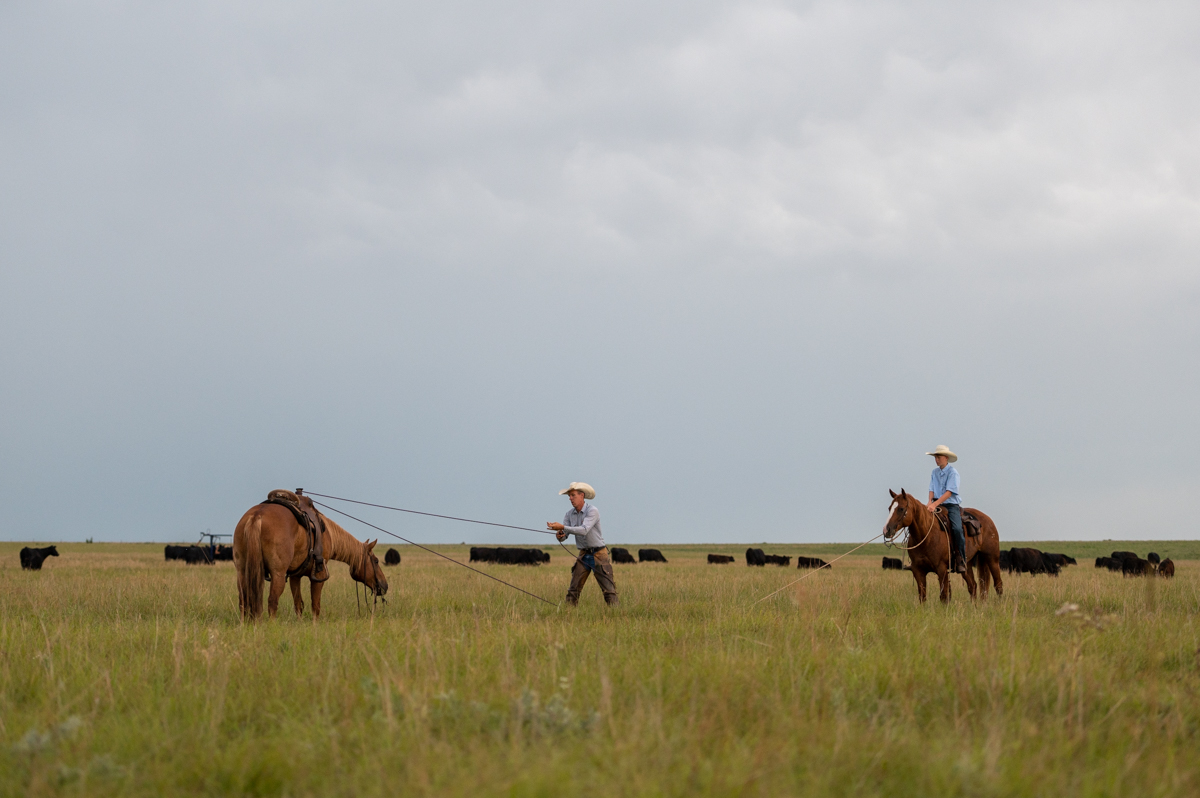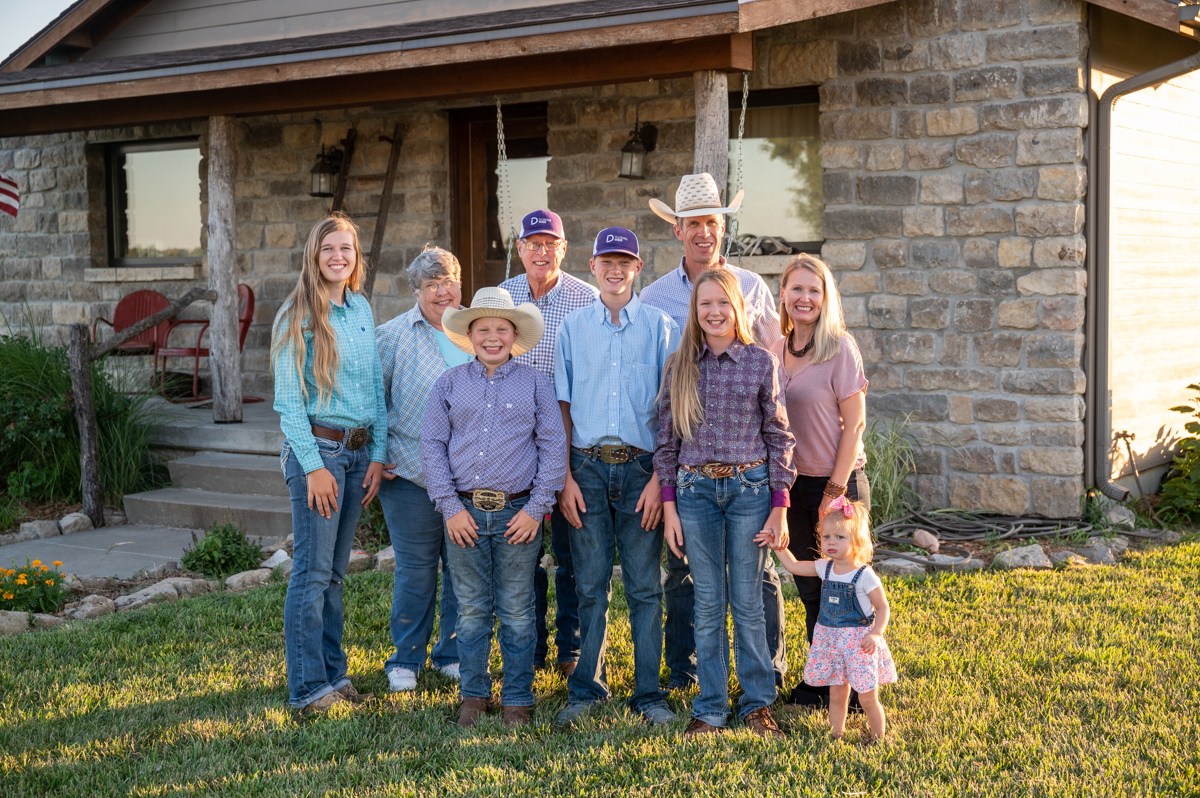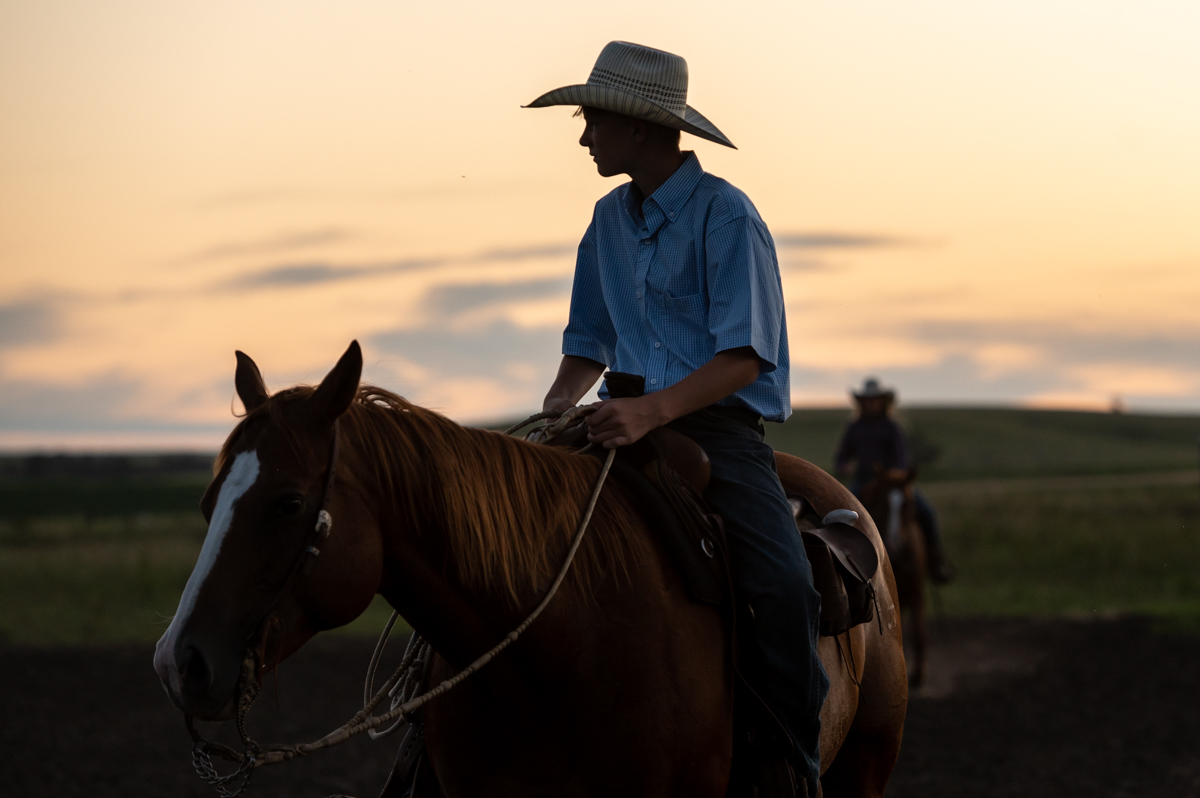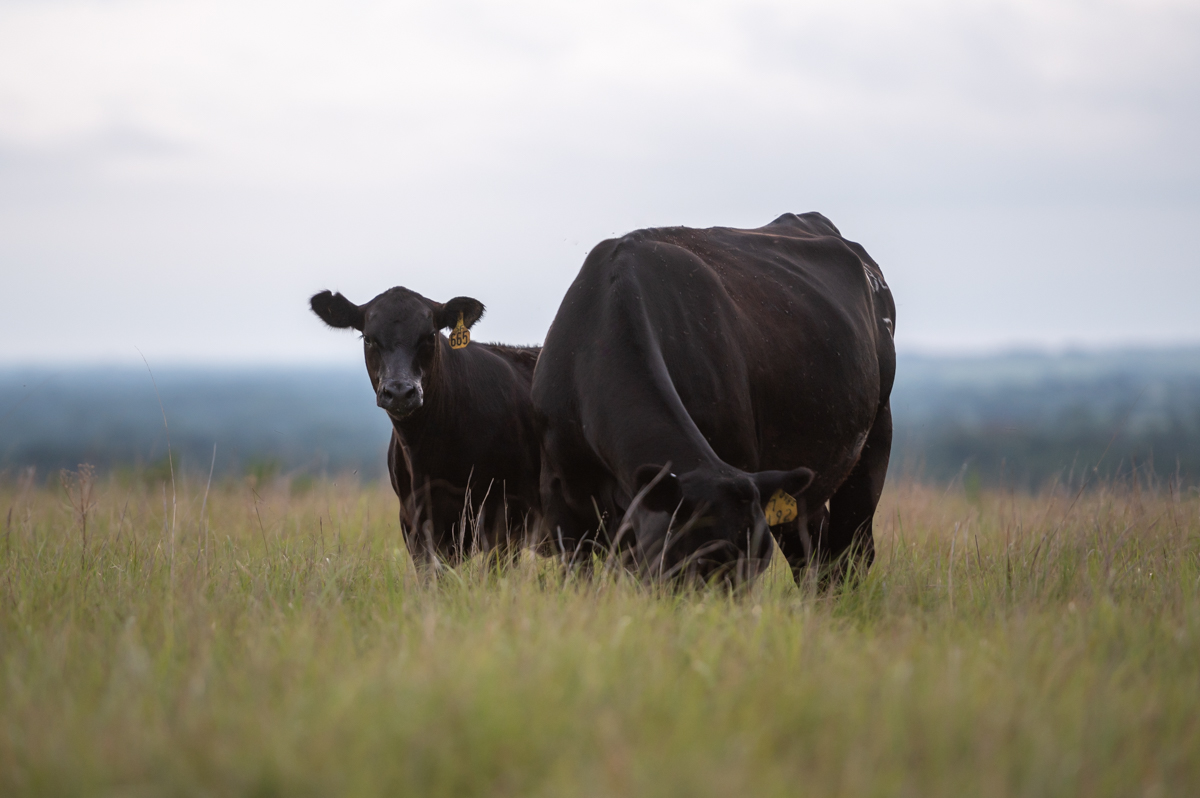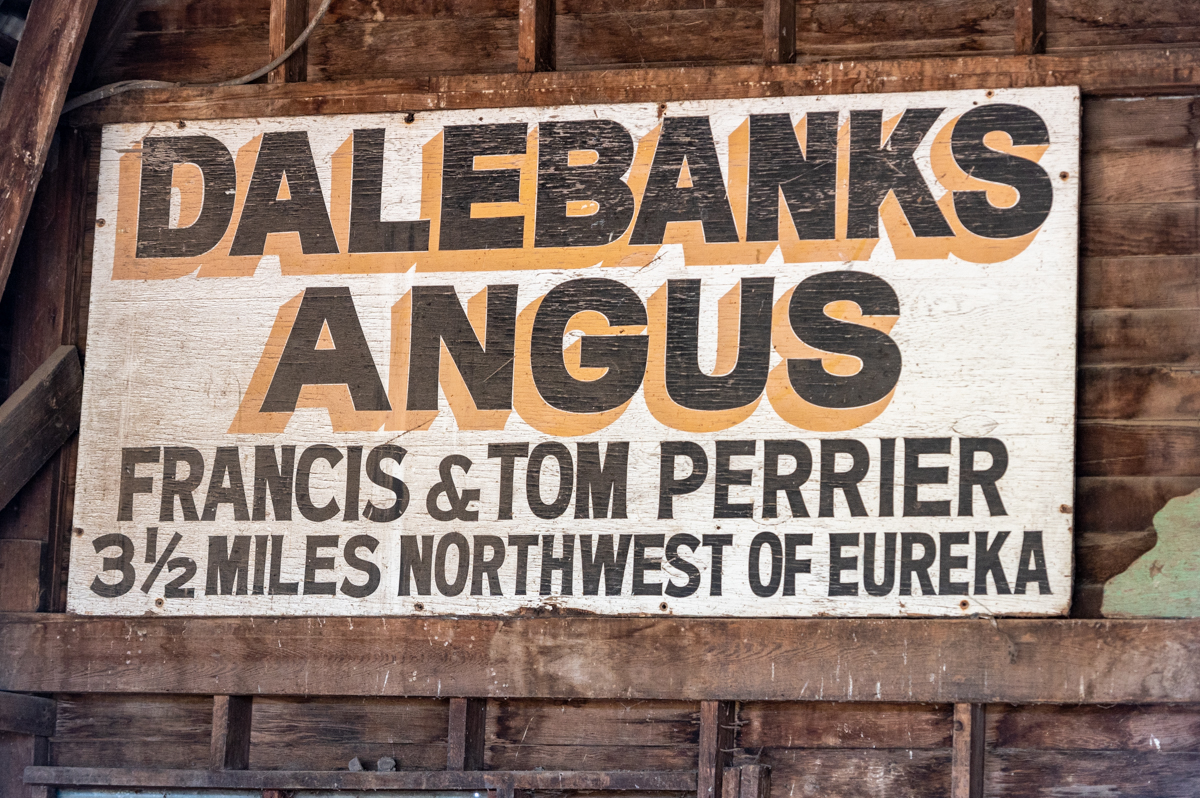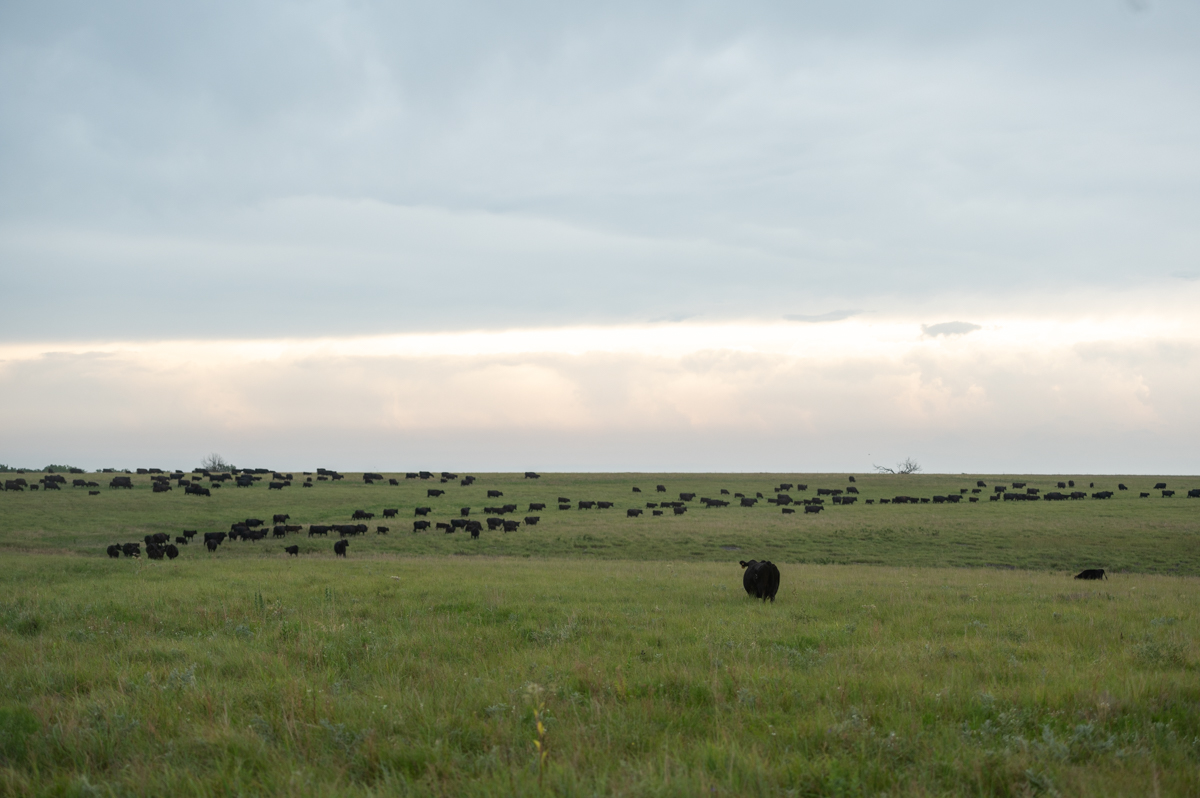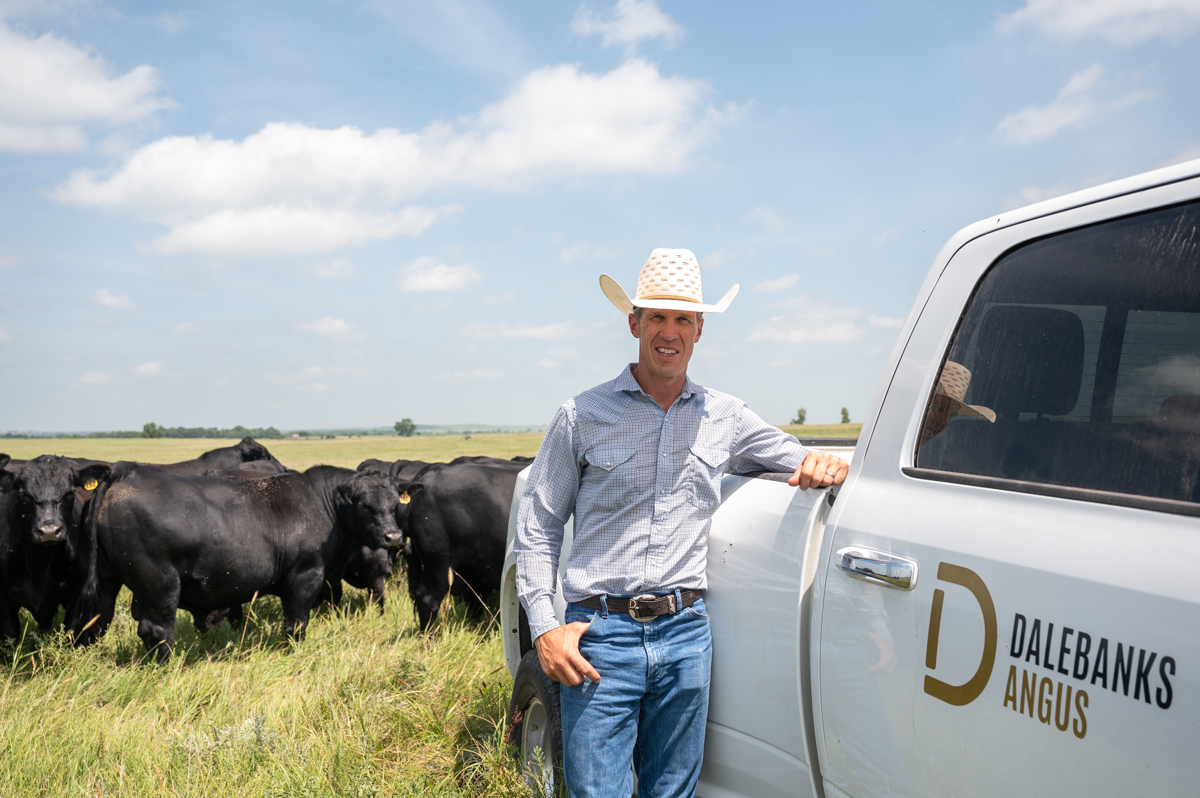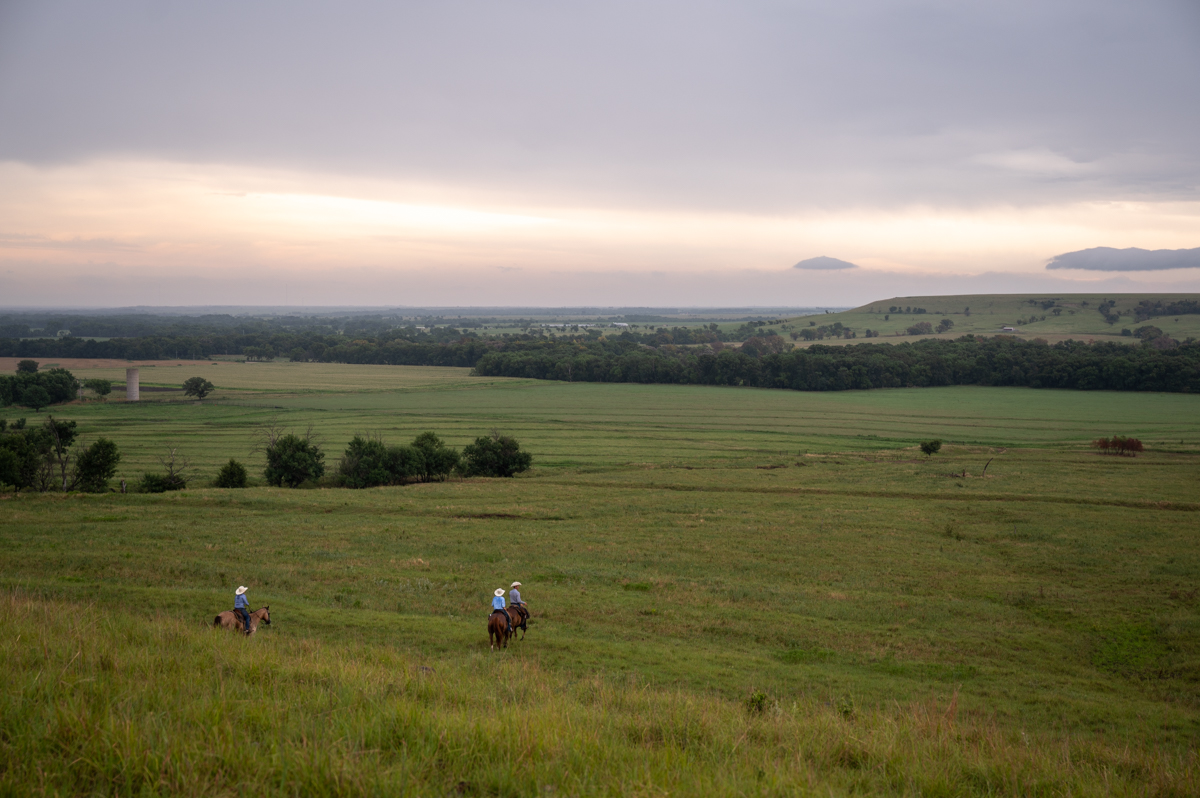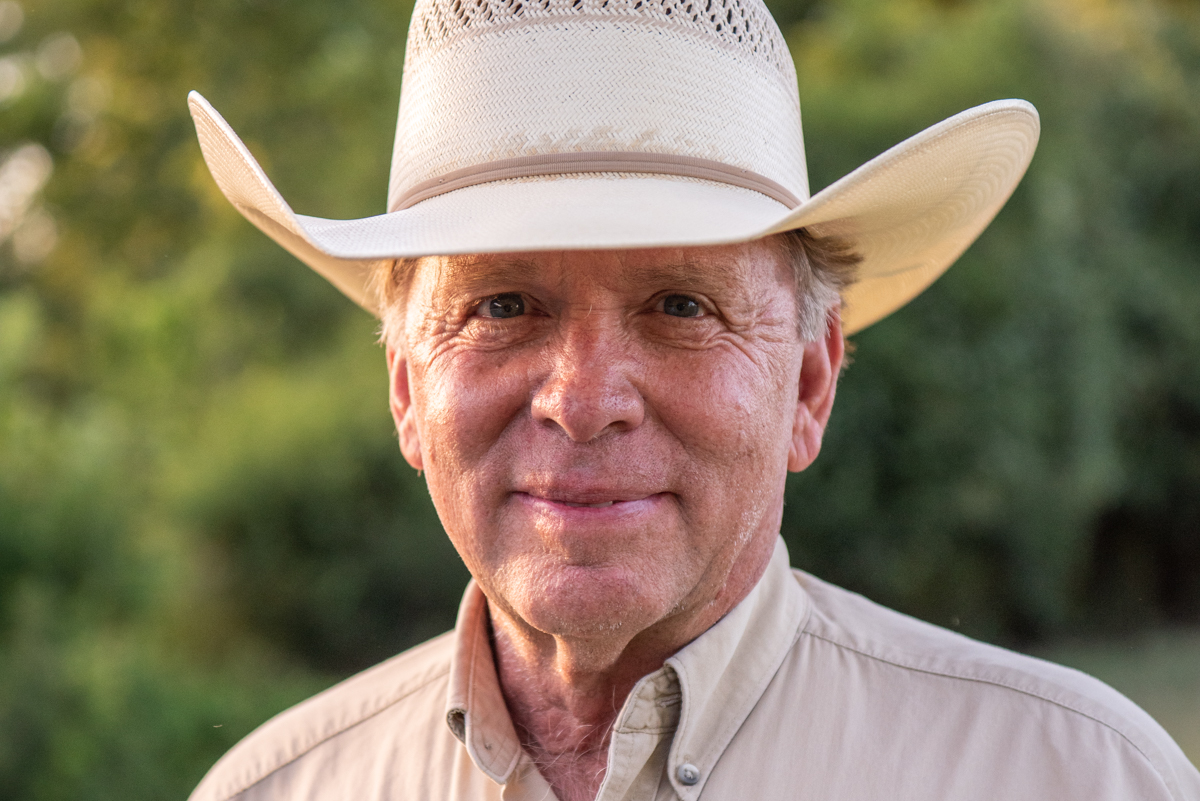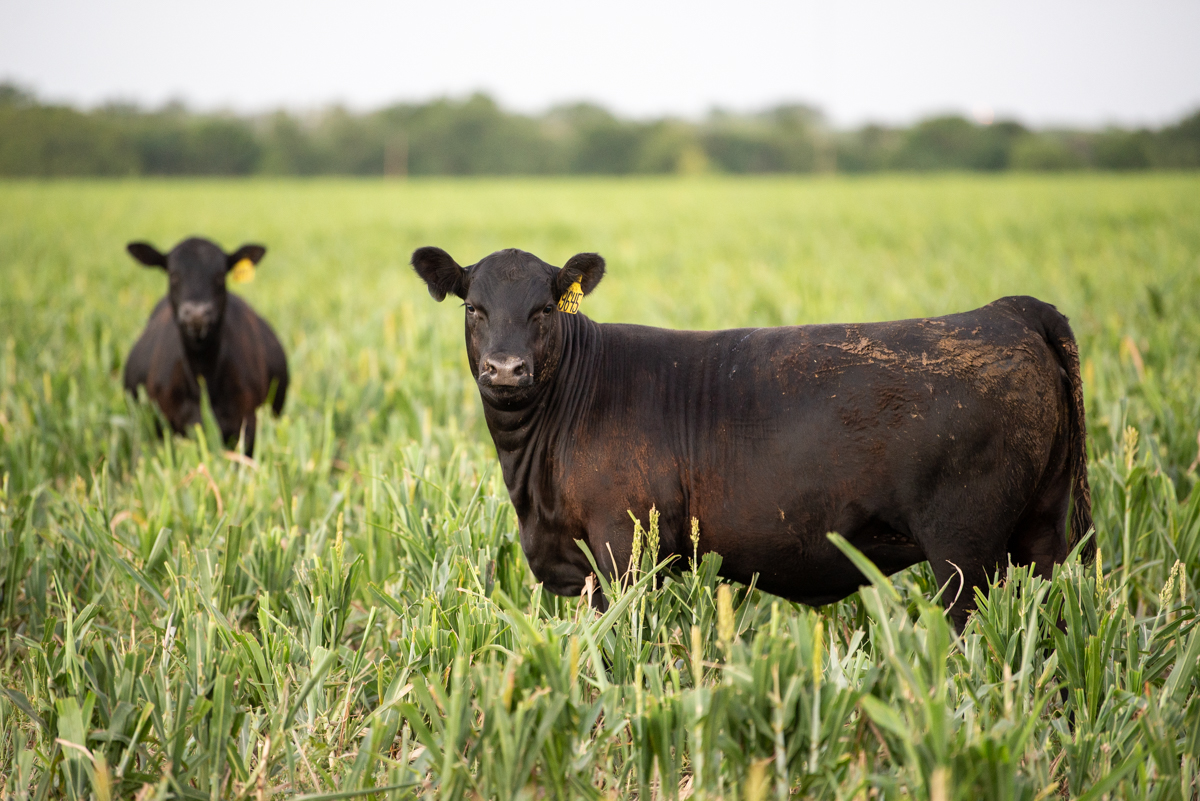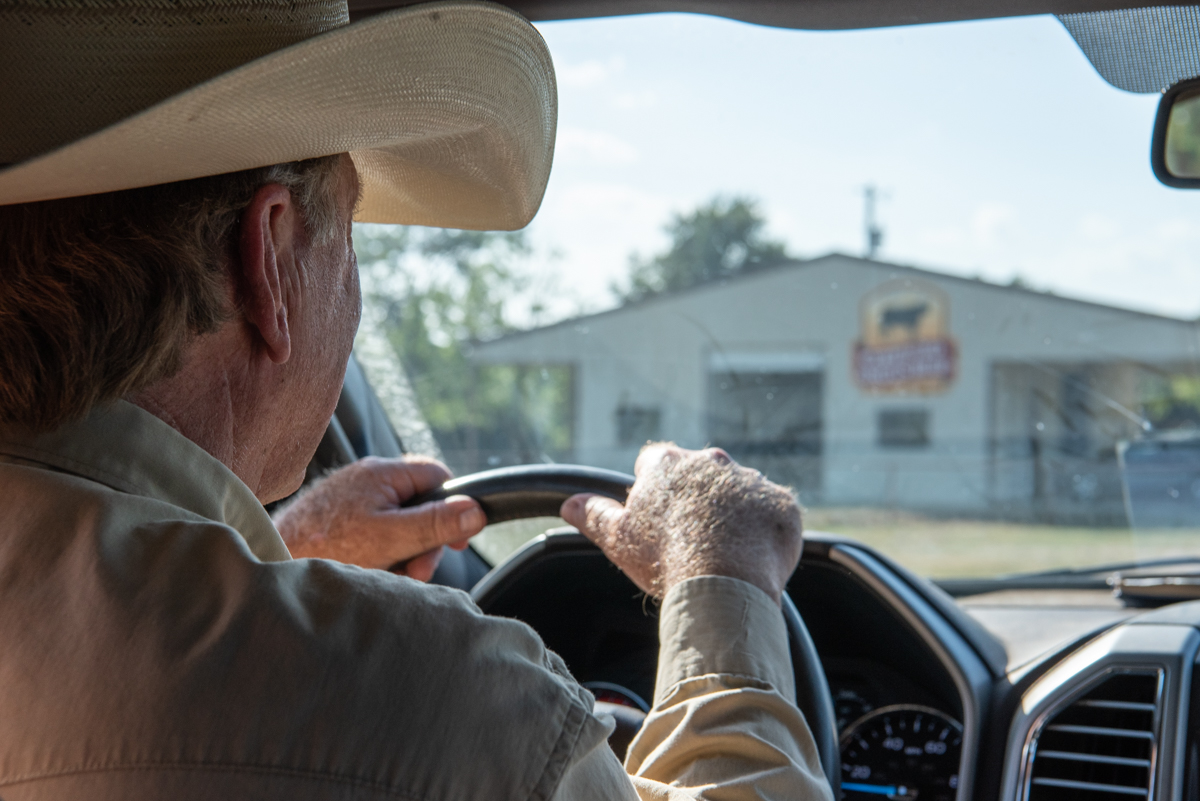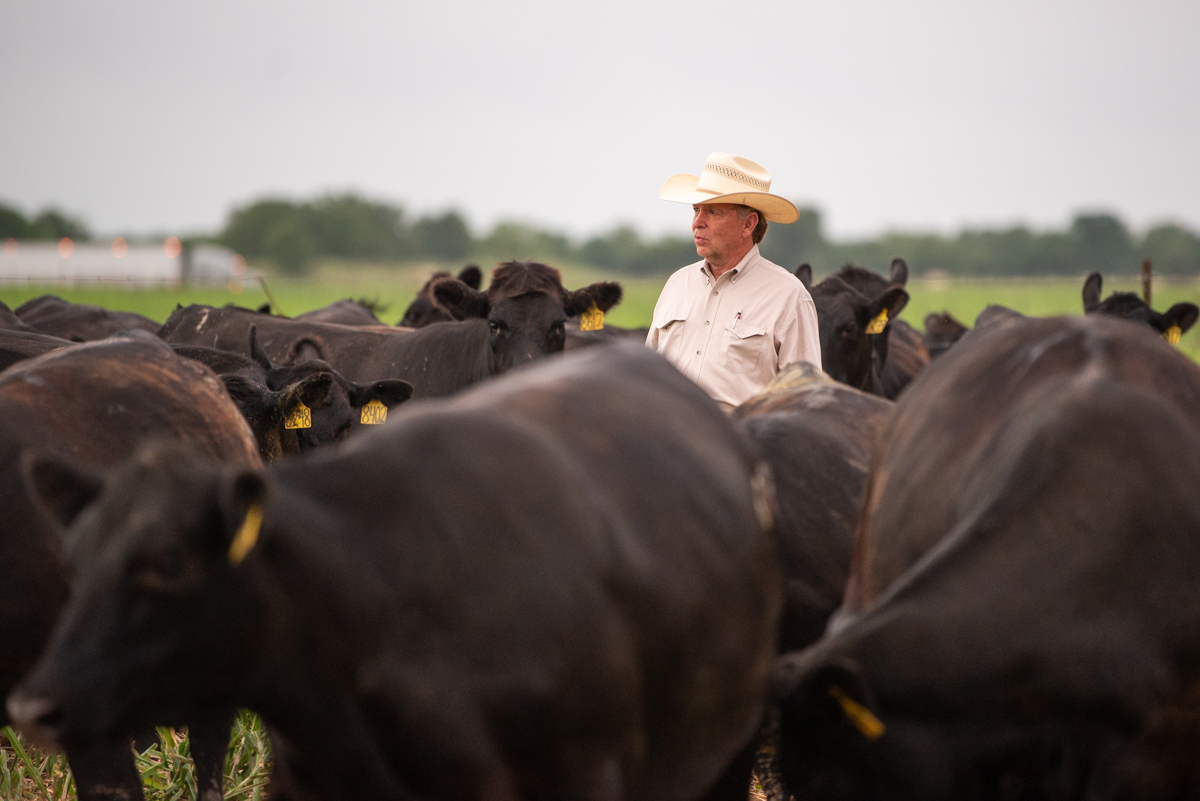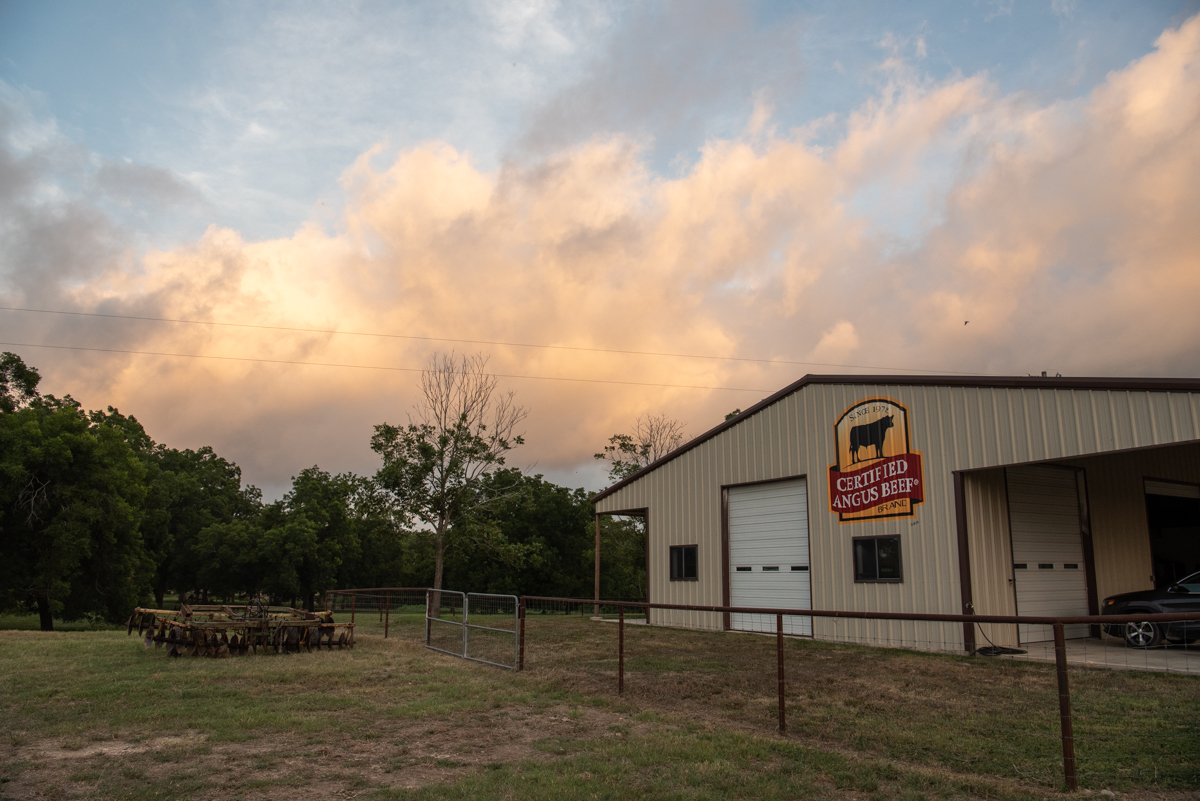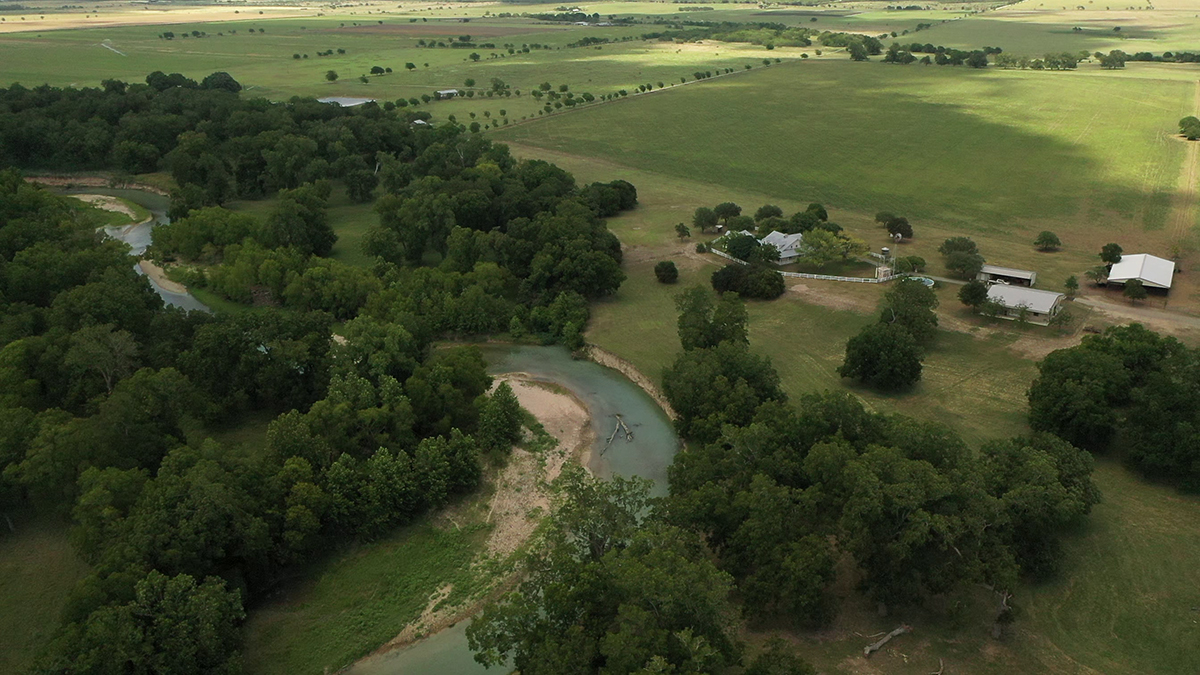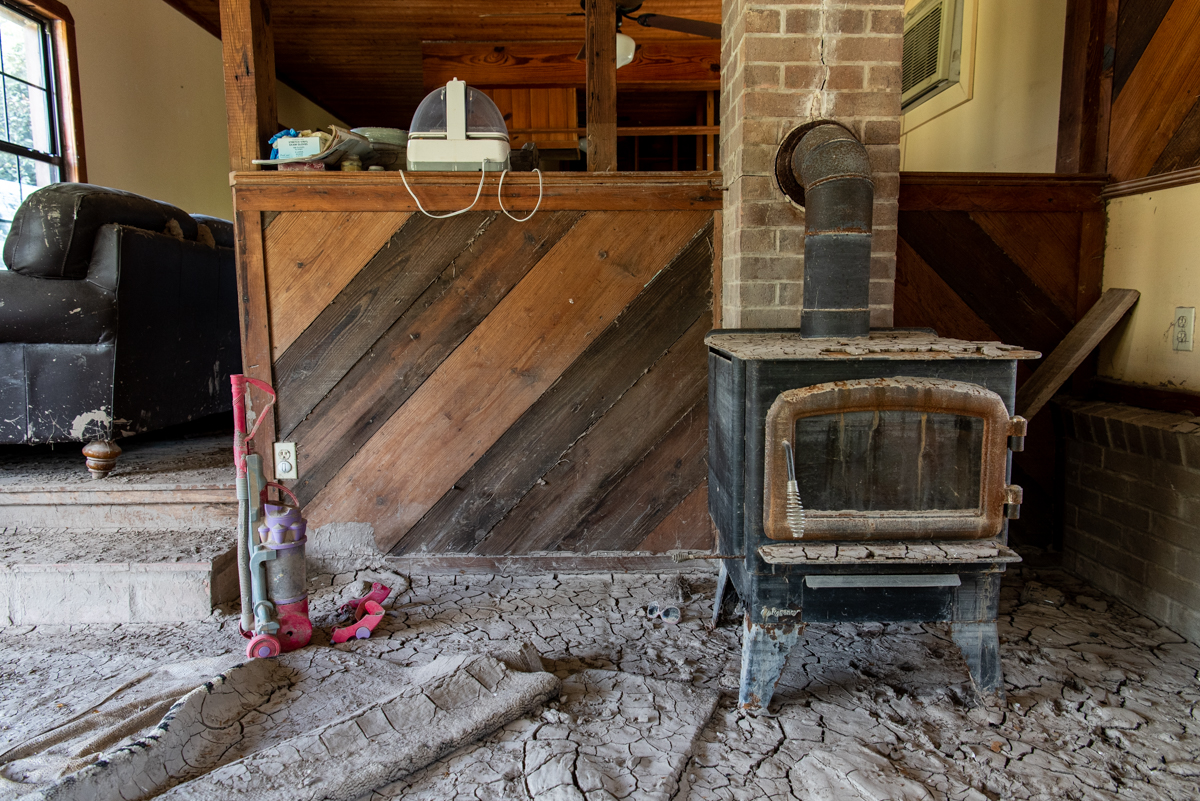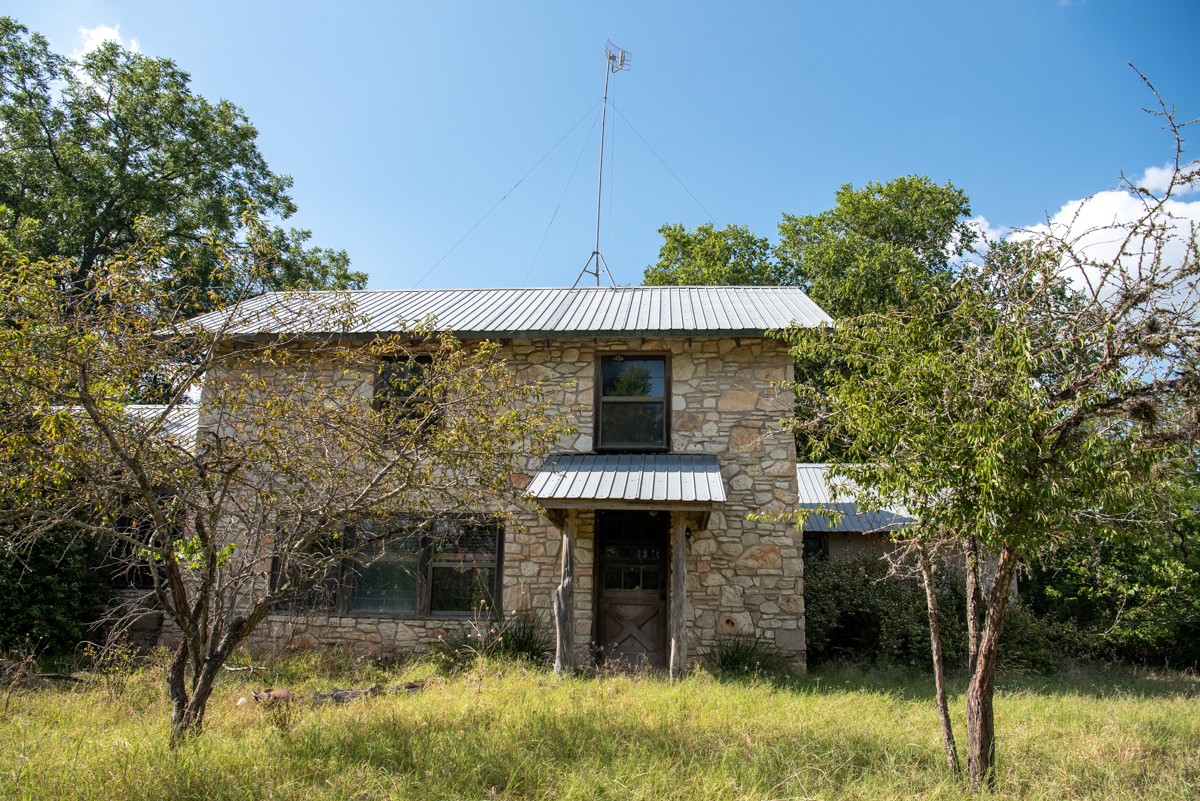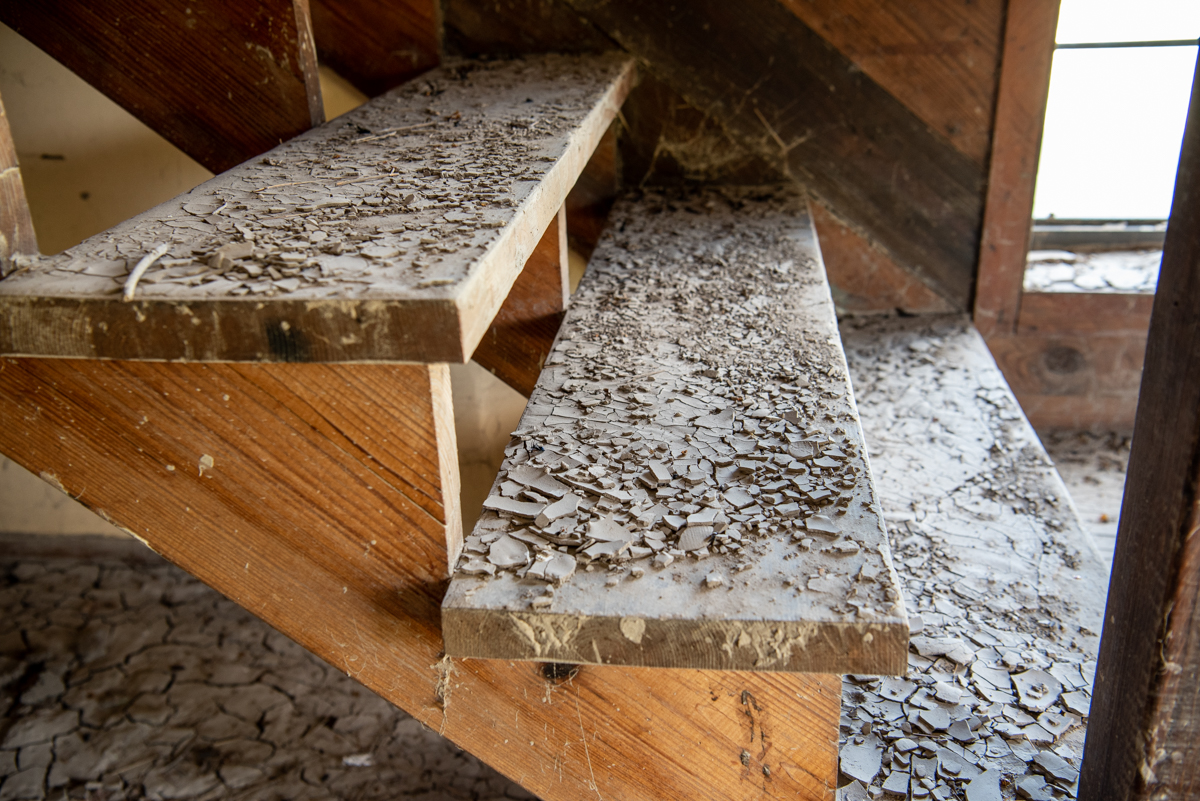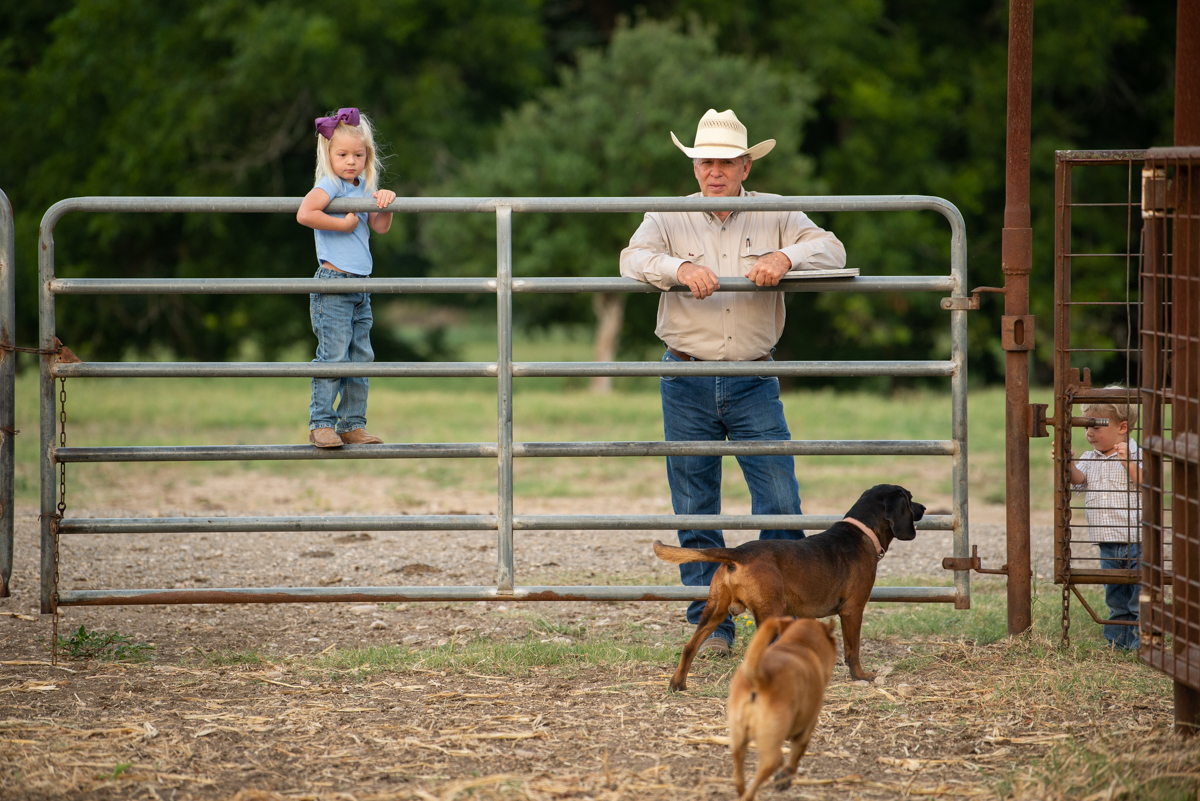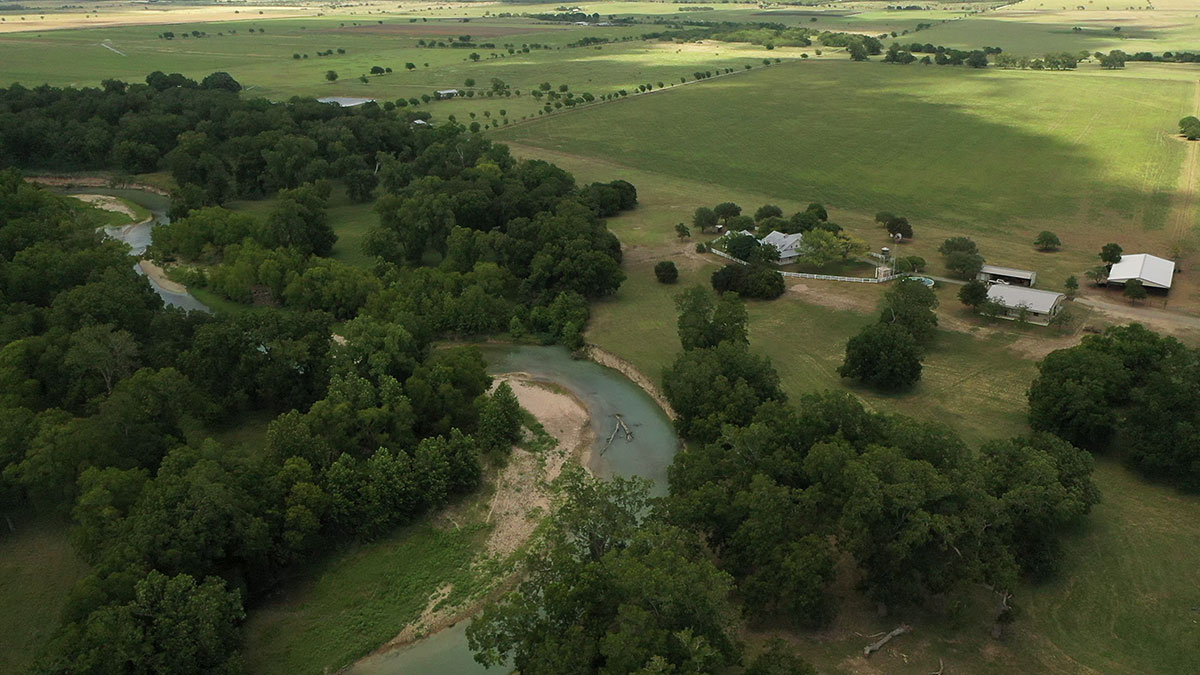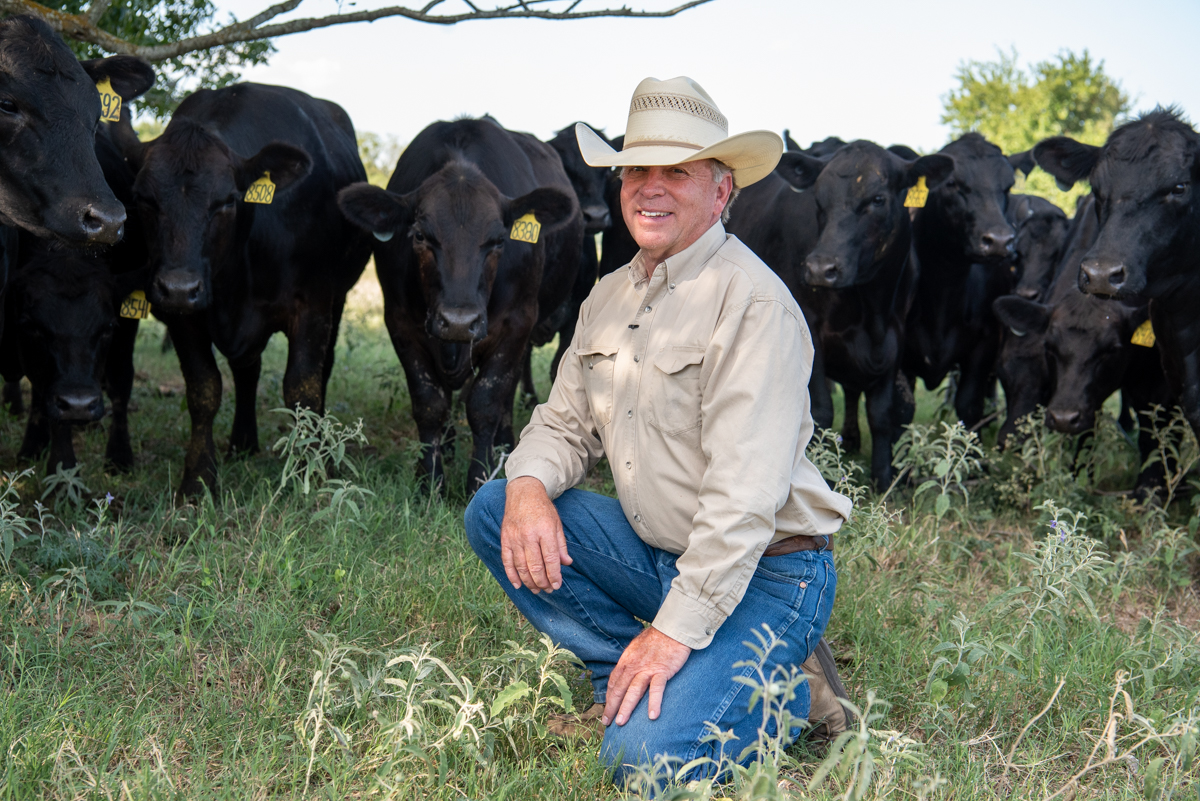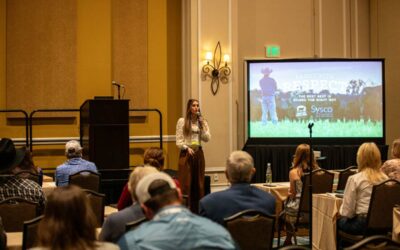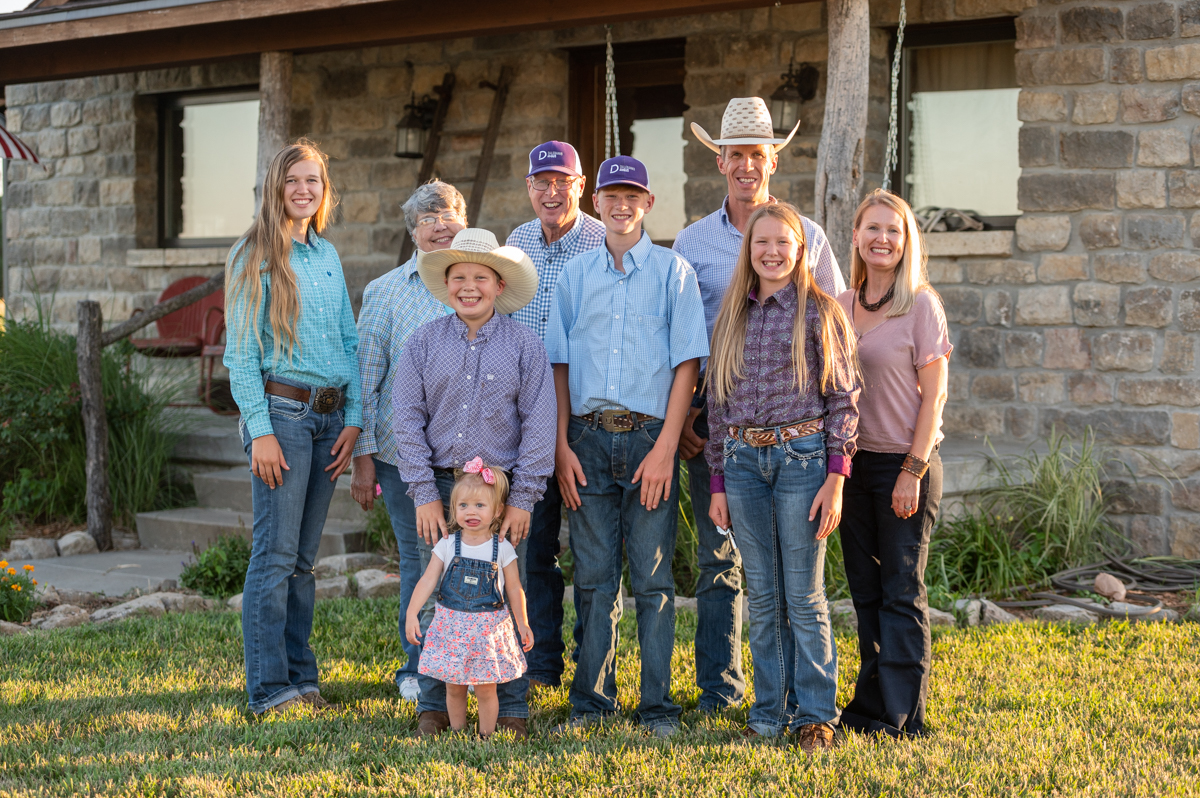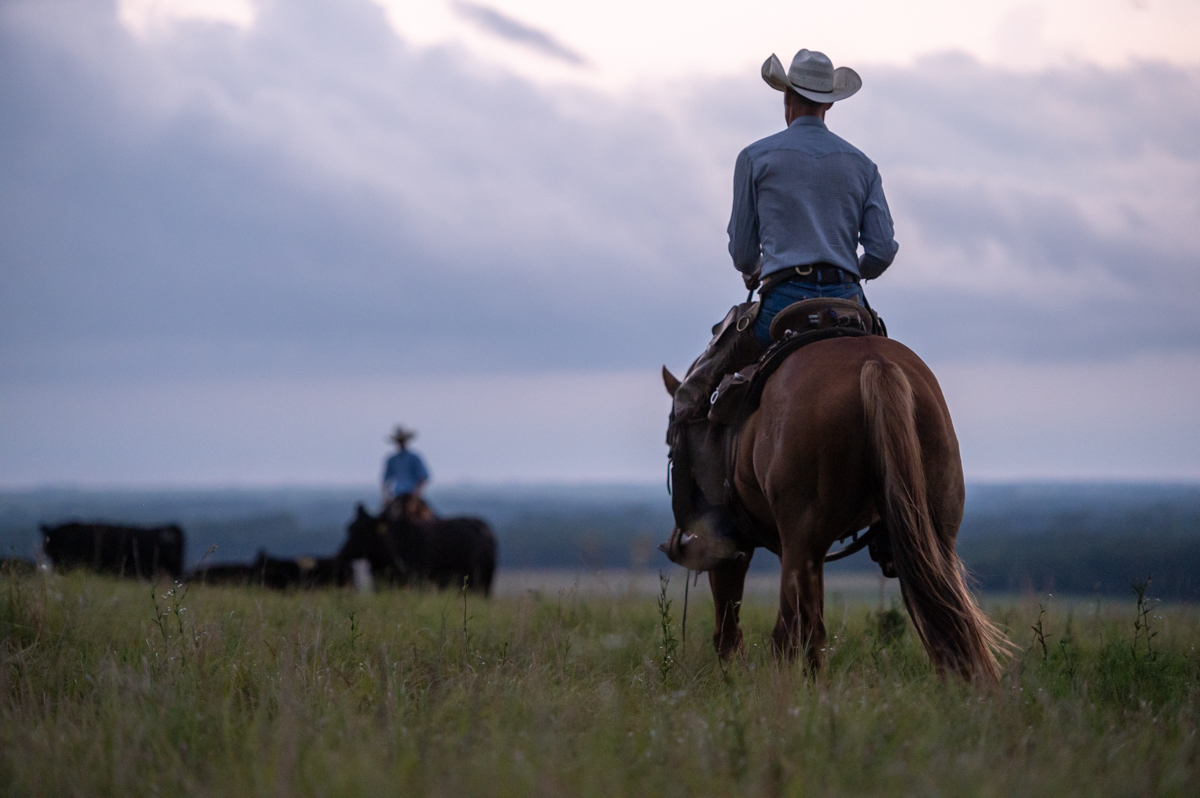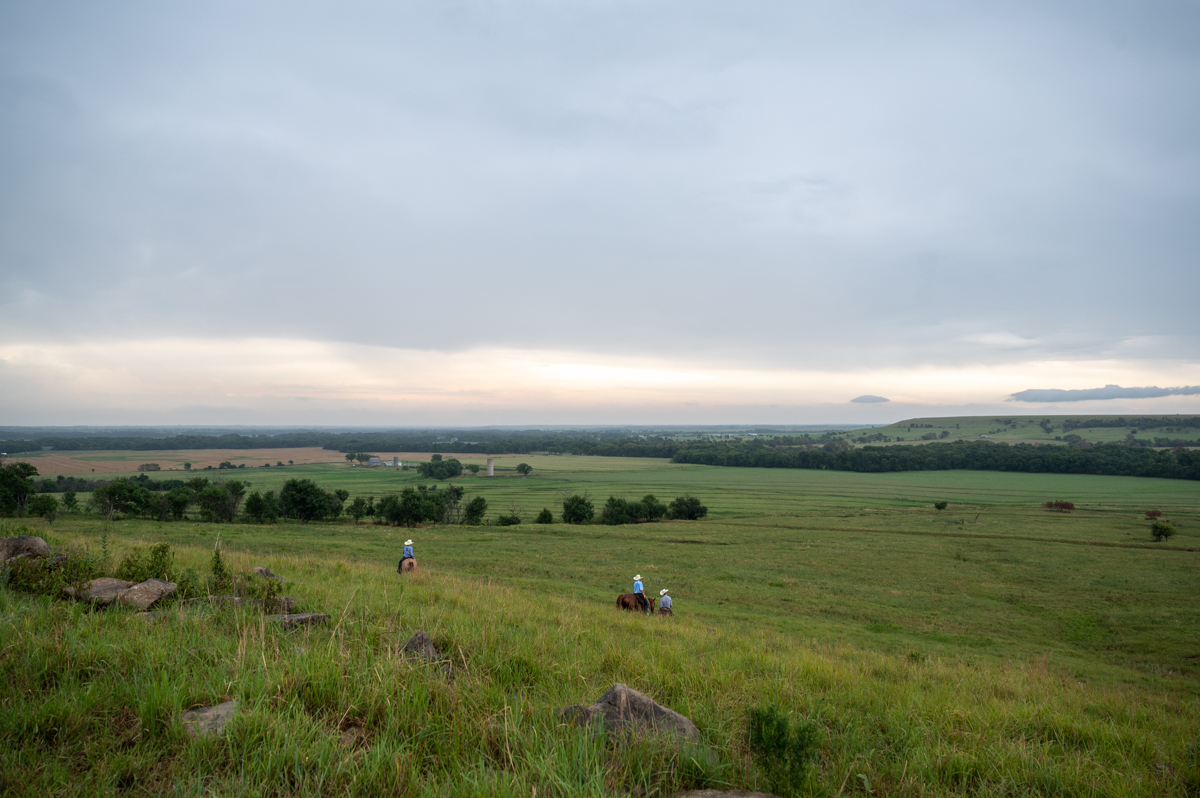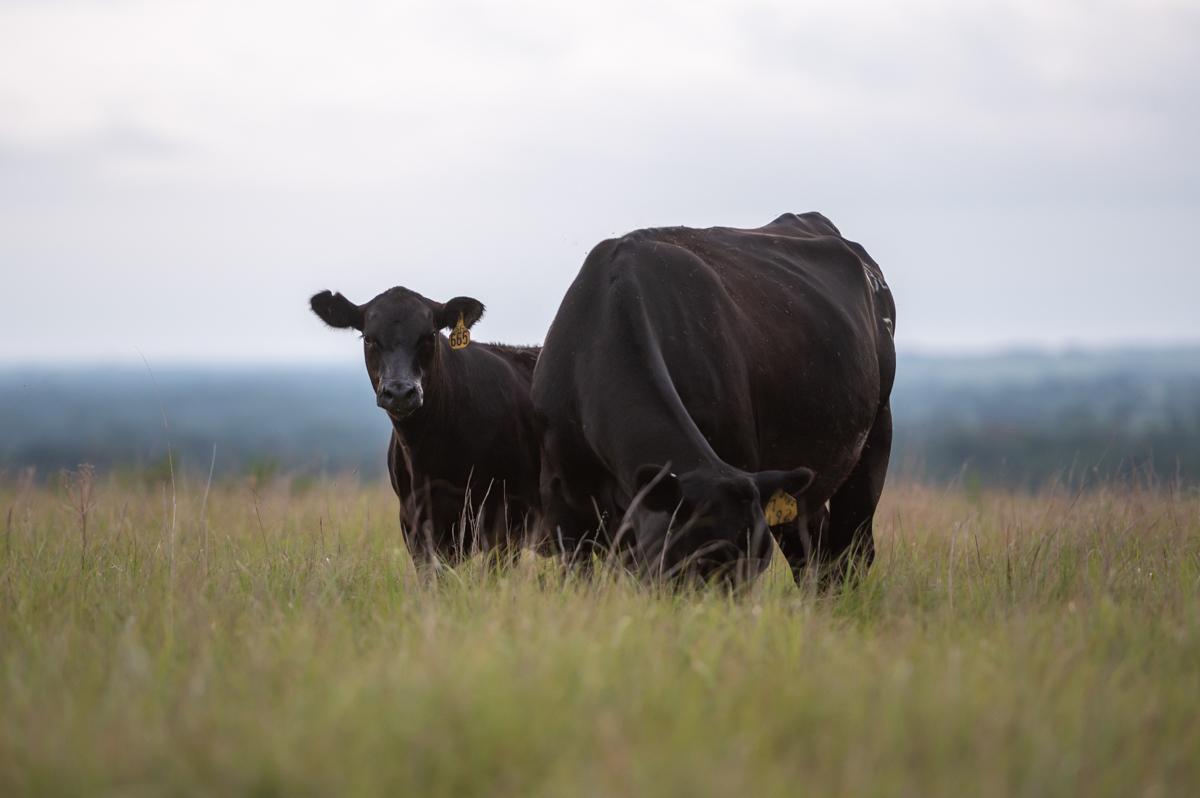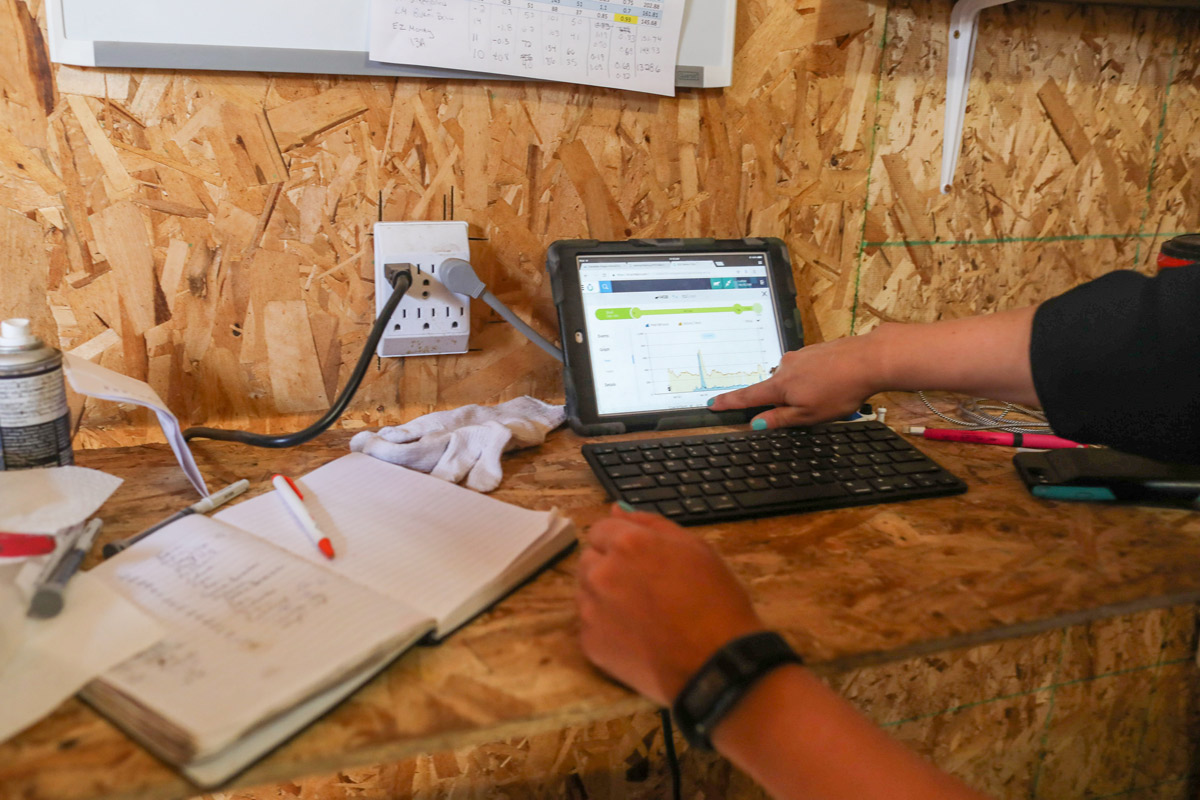
The Cattle Calling
Telling their story one tour at a time earns the Pfeiffer family the Ambassador Award.
Story and Photos by Kylee Kohls
October 4, 2021
Anticipation and anxiety build as a tour group navigates the pasture. The cattleman stops, scratches the closest cow’s back, and keeps talking.
Soon, dozens of Angus cattle surround the group. A trembling hand slowly rises, meeting a cool, curious nose. A glimpse of admiration and awe flashes across his face as the 1,200 lb. animal leans a little closer.
“I’ve never been this close to a cow before.” The Pfeiffers hear this phrase nearly every time they host a group on their farm.
It’s a moment most won’t forget.
Telling their story to the cattle curious was awkward at first for John and Gaye Pfeiffer.
“I realized that we were going to have to show people what it means to raise cattle and what all is involved,” says John.
Now, they look forward to hosting hundreds of people every year, sharing everything from the beef cattle life cycle, animal care, vaccination protocols, and sustainability practices to why they choose Angus cattle on their central Oklahoma farm.
Their dedication to teaching and connecting with those further down the supply chain earned them the 2021 Certified Angus Beef (CAB) Ambassador Award.
Following the call
All they ever wanted to do was farm.
Whether it was a calling or an inborn fondness for black cattle, John knew from a young age he would do whatever it took to follow in the footsteps of the three generations before him in the Mulhall-Orlando area.
“One of the first things my grandad did as soon as all his grandkids were born is make them members of the American Angus Association,” chuckles John.
His grandfather was instrumental in instilling a service mindset in the then-young cattleman.
“He and my parents taught me if you don’t put back into organizations, that thing is not ever going to get any better,” says John. “I am a strong believer that the most important thing you can do is show up. When we don’t, then our voice isn’t heard. For that reason, we do a lot in the community.”
His wife was raised with the same ideals.
“I’ve always felt that, if you can contribute, whether it’s to an organization or your business, then you will find your place, and you will be accepted at that place,” says Gaye. “There should be something in every day that moves you forward in some way to make something better.”
She smiles at John and calls him “a total board member.” However, they often serve together in county, state, and national organizations, with local cooperatives, school boards, Farm Bureau, cattlemen, and Angus Associations. That’s where you find them off the farm.
Together, their mission is to make their communities better and more approachable.
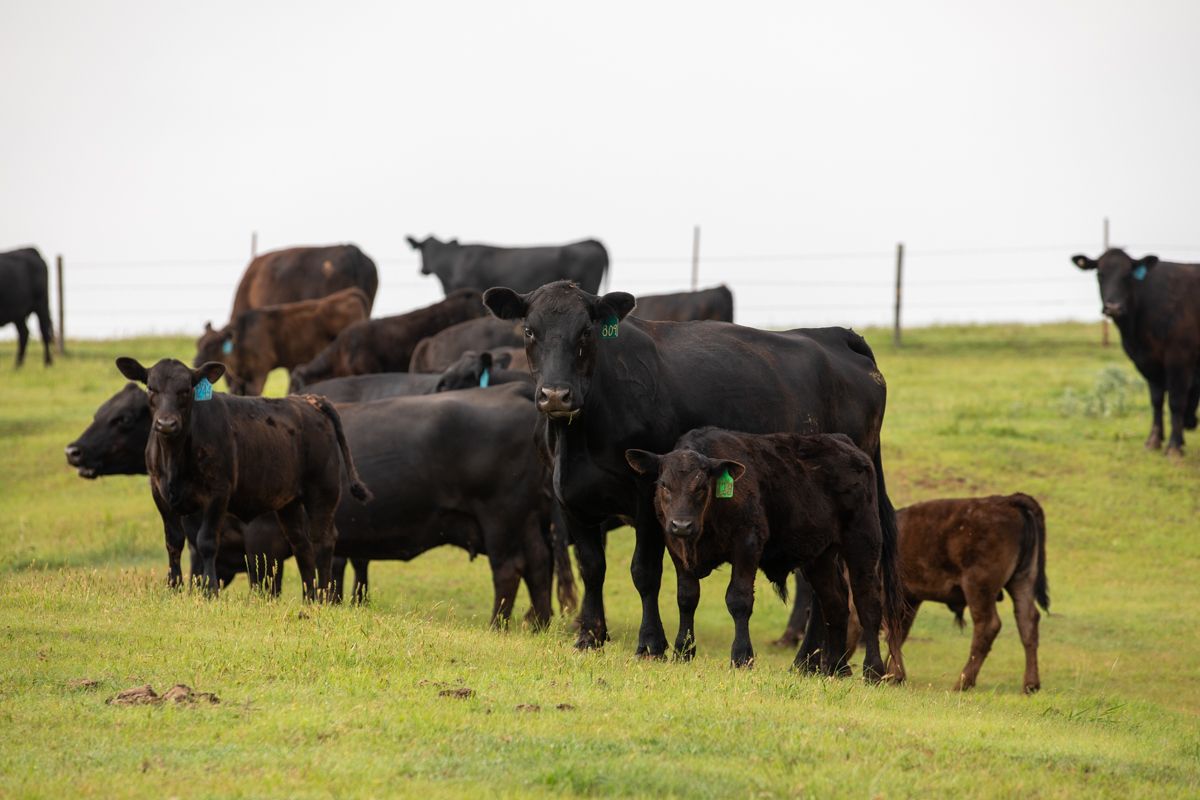
The Angus way
In 1907, the first Angus bull was purchased by a Pfeiffer and brought to Logan County. Seventy-four years later, just a few miles from where the origin bull roamed, John and Gaye began their venture with 30 cows. Those cattle became a part of the upbringing for the farm and their now-adult sons, John Christopher and Andy.
Today, the family calves out 300 cows.
Along the way, they discovered an opportunity to create strong seedstock genetics that add value to customer’s herds and bottom lines. However, it wasn’t until they attended a Certified Angus Beef ® conference in the 1980s that they realized the scope and impact of genetics needed to help meet consumer beef demands.
“We wanted to be able to produce beef that was the best that it could be,” says Gaye. “We felt like with the support of the American Angus Association and Certified Angus Beef; we would get to that point.”
Pfeiffers witnessed progress in their owner herd through intentional planning followed by a commitment to data. Selecting sires and cow lines that work for their environment, work for their customers, and target the Certified Angus Beef ® brand.
“It works because we invest a lot of time and effort into keeping track of the information, doing the genomic testing, and those kinds of things,” says Gaye. “We realized that you could do that with commercial cattle, and you can make some progress there also.”
John typically keeps about 20 steers back from both his fall and spring calves to feed for carcass data as a report card on their genetics. Recent groups earned 70% CAB or better on his calves. He also markets groups of feeder cattle through AngusLink, using the Genetic Merit Scorecard SM to showcase the quality built into his herd and test his own cattle in the value-based marketing avenue available to his customers.
“It’s twofold. Not only does it help CAB because we get a better quality of meat, but it helps us understand that we’re producing the right bulls and the right females that are going to in turn help our customers,” says John.
Their focus is quality consistency in the bulls they breed and across their herd.
“The Angus cow has made Certified Angus Beef successful. Certified Angus Beef has made the Angus cow more profitable,” he says.
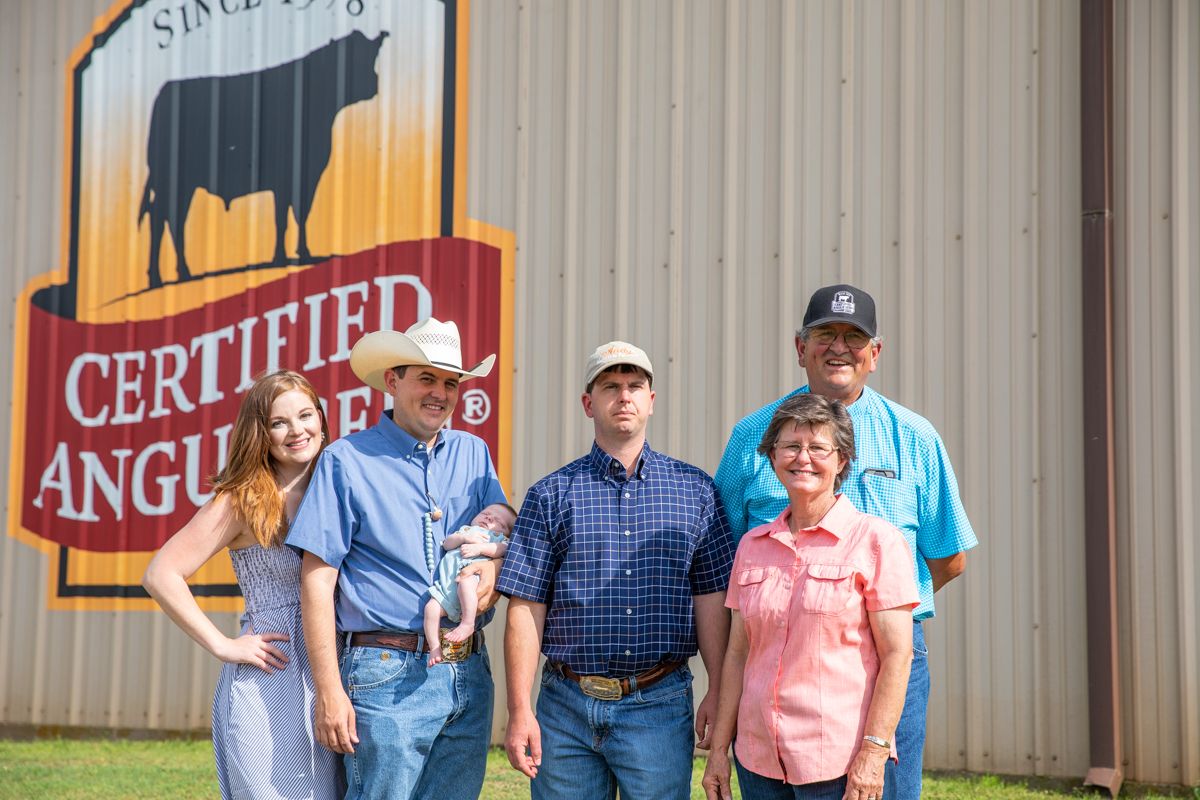
Telling their story
Giving back was something both John and Gaye were taught to value from a young age, but they learned storytelling along the way.
When John received the call to run for the American Angus Association Board of Directors, he felt unqualified. After conversations with close mentors, he realized it was an opportunity to grow and learn alongside some of the breed’s most successful farmers and ranchers.
He eventually served as the Certified Angus Beef ® Chairman of the Board in 2017.
“By the end of the Certified Angus Beef Annual Conference, we’d made a lot of friends with people across the business and found out that everyone works just as hard as we do and that this is a partnership,” says John. “It’s just unbelievable – the fact that we make it possible for them to do what they want to do by selling a quality product, and they make it possible for us to continue to stay here and raise that product.”
Gaye says it was a reminder that it’s easy to become insulated. Hosting groups and tours help keep them connected to those further down the beef value chain.
“We consider it a privilege to be able to host groups. It’s always been our obligation we thought as producers to interact with all the different segments Certified Angus Beef interacts with to explain our role and how it all fits together,” says Gaye.
A legacy in serving others
After forty years of progress together, John and Gaye continue to share their up close and personal experiences with their cattle and community.
“We think a lot about what we do today that’s going to make sure that it’s still here for our grandson in the next 40 years,” says Gaye. “There are things that you have to do to take care of the land and take care of your business, to make sure that it’ll still be here.”
Thanks to the vision, service, and progress John and Gaye started, the fifth John Pfeiffer now could raise cattle in the same area his family began farming in more than a century ago.
“A legacy to me means more than just acres and cows,” shares Gaye. “A legacy to me means you are also sharing your values. You’re sharing the love of the land, the importance of feeding the world, and the importance of doing whatever it takes to make things better in the end.”
Originally published in the Angus Journal.
You may also like
From Modest Beginnings to Excellence
Gilchrist Farm recently received the 2024 Certified Angus Beef Canadian Commitment to Excellence award. This prestigious honor recognizes their exceptional achievements in high-quality Angus genetics and management. Over the years, they have transformed their operation by embracing superior Angus genetics. Their commitment to high standards and innovative practices has distinguished them as a model of excellence in the industry.
From White House to Farmhouse
At Pleasant Valley Farm in Brookville, MD, four generations of the Stabler family have blended tradition and innovation to create a thriving, diversified Angus operation. Honored with the Ambassador Award at the 2024 Certified Angus Beef (CAB) Annual Conference, the Stablers exemplify a commitment to sustainable farming, community engagement and educational outreach. Their significant contributions to the hosting on behalf of the CAB brand highlight their commitment and play a key role in receiving this award.
What’s Good for the Cattle, Is Good for the Wetlands
JY Ferry & Son, Inc., named the 2024 Certified Angus Beef Sustainability Award winner, exemplifies how sustainability in agriculture can bridge quality beef production, land stewardship, and wildlife management. At JY Ferry & Son, what’s good for the cattle is good for the wetlands—and good for the next generation of this multi-generational family business.





